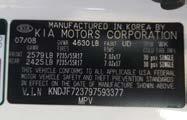






By Paul Hughes Autobody News
Contra Costa College in San Pablo, CA, graduated four more collision repair techs in May, doubling its total taught and turned loose to eight, since affiliating with the Collision Engineering program in 2020.
“We started with one student and now have five cohorts,” said Laura Lozano, professor of collision repair technology and co-chair of the automotive department at Contra Costa.
Students have received more than $150,000 in teaching, training, tuition reimbursement and other support, get just north of 1,000 hours of paid interning with local body shops, and can step into jobs paying $25 an hour. And something else.
There’s More
By John Yoswick
Greg Horn of PartsTrader sees a new potential threat to the continued improvement in parts delivery times to shops: a potential longshoreman’s strike at East Coast and Gulf coast ports.
“They cancelled scheduled talks on the renewal of the contract that expires Sept. 30 of this year,” Horn said of the unions, upset after learning of automated processing of some containers that is supposed to be done by union representatives. “To give you an idea of what an East Coast and Gulf Coast strike would be like, seven of the top 10 [U.S.] ports would potentially be impacted by a strike. It will impact not only the aftermarket [parts] coming in from Taiwan through the Panama Canal for deliveries to the East Coast, but we also get a lot of vehicle components for European [automaker] vehicles
that are being manufactured in Alabama, South Carolina, etc.
“So this is a potentially the next thing to keep an eye out on to see how it’ll impact the industry,” Horn said.
During the July 24 PartsTrader webinar, Horn said the average newvehicle price has come down since the late 2022 microchip shortage and as manufacturer and dealership vehicle inventories have rebounded. Used vehicle prices have also fallen. Insurers watch those trends, he said, because of their impact on total loss numbers.
“The insurance companies actually prefer to have a vehicle repaired, even when it’s a heavier repair, because the chance of [customer] defection after a total loss,” Horn said. “The chance that a policyholder shops around and potentially goes to a new insurance company is higher when there’s
The community college’s program has 16 active apprentices, a waitlist for the fall, new full-time faculty, and a growing recognition in the San Francisco Bay Area.
Graduates also get an associate’s degree. The degree is required of all schools in the Collision Engineering program, said Molly Mahoney, national marketing and engagement director for nonprofit Collision Engineering, in St. Louis, MO. Founded by the Enterprise Mobility Foundation and Ranken Technical College in St. Louis, the
Several California dealerships are under new ownership, according to Performance Brokerage Services.
McKinleyville, CA
BMW of Humboldt Bay in McKinleyville, CA, was sold by Reza Lankarani to Victory Automotive Group. It will retain its name and location at 1795 Central Ave.
Founded in 1997, Victory Automotive Group operates more than 50 locations across 10 states

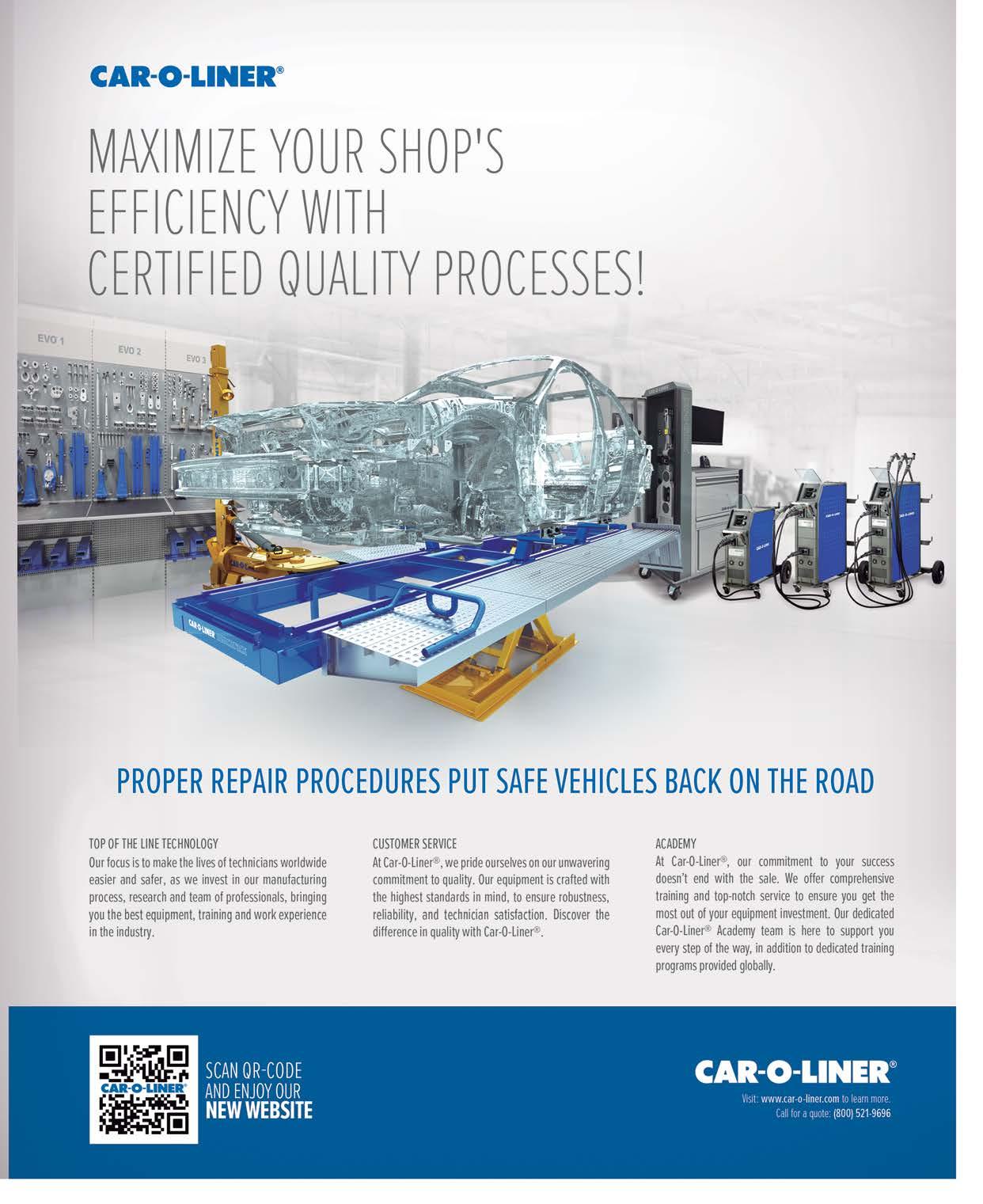

Auto Dealerships Change
1
3M Introduces 3M OEM Match Family 49 Applications Open for CIF Board Seat 51
FCA Recalls 340,000 Alfa Romeo, Fiat, Jeep Vehicles Over Airbag Issues 29
GM Halts Production at One Plant, Delays Restart at Another 48
Hertz Increases Efforts to Sell Tens of
Mike Anderson
More on Measuring Your Shop’s Performance Based on Gross Sales Per Body Tech 18
Abby Andrews Caliber Collision Focuses on Its People to Future Proof Its Business 32
NASTF Helps Collision Repairers Close OEM Repair Info Gap, Prevent High-Tech Car Theft 28
One Twenty Two Collision Founder Talks About Skills Needed to Grow Your Own MSO 6
SEMA Battle of the Builders Young Gun Winners: Where Are They Now? 20
Simplicity Car Care’s Franchise Model ‘Helps Owners Enjoy the Fruits of Their Labor’ 38
VIVE Collision Uses ‘Secret Sauce’ to Become Major Collision Repair Player in Northeast Market 8
Brian Bradley 5 Things Collision Repair Shops Should Consider Before Getting Acquired 30
Paul Hughes
‘I’m Just a One-Man Shop. What Can I Do?’ 24
Bay Area Body Shops Ahead of Curve on Cybersecurity 44
Collision Repairers Brace for Long-Term Cybersecurity Change in Wake of CDK
to Cut Underperforming
50
49
Contra Costa Tech Program Focuses on Whole Person Learning, for Future of the
Custom Shops Use Tech, Training to Turn Out Old School Quality in New Dog Way 34
Stacey Phillips Ronak
3D Printing Task Force Identifies Collision Industry Opportunities and Challenges 4
How to Ensure Your Collision Repair Business Has a Future 10
Midwest MSO Recruiter Shares Hiring, Retention Success Strategies 22
John Yoswick
Collison Repair Instructor Has Unique Methods to Promote Industry to Potential New Techs 16
GEICO, asTech Pricing Agreement Concerns Brought Up at CIC 14
Opponents of REPAIR Act Say It Represents Non-OEM Parts Makers, Not Collision Repairers 46
PartsTrader: Possible Port Strike Could Put Dent in Improving Parts

In recent years, original equipment manufacturers (OEMs) have adopted 3D printing, also known as additive manufacturing (AM), for end-use parts. Some have set up 3D printing production facilities, focused on short-run manufacturing or the design of complex parts.
To determine the full potential of 3D printing and ensure the technology and on-demand parts are brought to the collision repair industry through a safe and regulated 3D supply chain model, ambassadors from the International Bodysho Industry Symposium (IBIS) formed the 3D Printing in Collision Repair Task Force at IBIS USA 2023, in Nashville, TN. The aim was to investigate the potential opportunities of 3D printing in the automotive and collision industries.
Led by Harold Sears, formerly in the additive manufacturing department at Ford Motor Company, the task force consists of global business and industry associations focused on auto collision repair. Members include Jason Moseley, IBIS Global; Mario Dimovski, The Boyd Group; Francois Minec, HP; Daniel Wittek, 3M Automotive Aftermarket Division; Rebecca Fecteau, BASF; Steve Fletcher, ARA; Brandon Teets, ADAC Automotive; Dave Hartman, Carhart Products; Jeff Peevy, I-CAR; AJ Strandquist, Wurth Additive Group; and Justin Elliot, LKQ Europe.
After a comprehensive analysis, the task force produced a report showcasing its findings in September 2023. Members identified a transformative potential for 3D printing, with immense opportunities.
“The integration of 3D printing into the collision repair industry presents exciting possibilities that can revolutionize vehicle restoration, benefiting all stakeholders,” according to the report.
These include collision repair centers, insurance companies, OEMs, vehicle salvage and part recyclers, and aftermarket auto parts suppliers.
However, the task force also recognized challenges regarding safety, quality and reliability.
“While the adoption of 3D printing brings numerous opportunities for efficiency, cost reduction, and sustainability, it is crucial to address the challenges associated with the use of poor-quality 3D printed auto parts,”
the report stated. “The risks posed by substandard parts, including safety concerns, incompatibility and warranty implications cannot be underestimated.”
Task force members said these risks have far-reaching implications for all industry stakeholders, as well as 3D printing providers.
One of the significant challenges Sears pointed to is the issue of unregulated materials, leading to inconsistencies in quality and performance.
“This problem is exacerbated when parts are produced using lowgrade 3D printing machines that do not meet industry standards,” explained Sears. “These pose significant safety risks, as they may not have the necessary strength, durability or heat resistance required for automotive applications.”
by OEMs or certified by recognized quality standards.”
Members stressed the importance of developing education and training to increase awareness and knowledge about 3D printing technology, quality standards and best practices. In addition, they advise establishing a regulatory body or governing authority to enforce quality standards, certification processes and compliance measures for 3D-printed parts.
Following the report, Auto Additive was established to provide 3D printing solutions to the automotive repair industry. The company provides AM services to collision, aftermarket and OEM clients by managing their current CAD files to print parts or offer engineering services and build their own exclusive data database.

Sears, named head of Auto Additive’s Strategic Advisory Council, said the company’s mission is to provide safe, OEMcompatible and industryready products using proven automotive-grade materials backed by rigorous internal testing.
digital inventory, controlling where we print and how many,” explained Sears. “Each product has a unique alphanumeric identifier, searchable via our website, tracing to the batch date, location and parts data, ensuring ultimate IP protection and product authenticity for clients.”
Auto Additive and its founding partners, HP, Headlights.com and 4Plastic, supply 3D-printed tools, jigs and repair parts, such as the industry’s first polypropylene weldable highlight tabs.
At the RAPID+TCT conference in June, Auto Additive showcased a 3D-printed and weldable headlight repair tab using polypropylene material and processes that align with GM’s GMW18647 worldwide standards. These tabs are directly weldable using plastic fusion welding directly onto the headlight base or the broken part.
Diana Trajcevska, Auto Additive’s director of Additive Innovation, said the industry first was a collaborative effort with Forecast3d and Headlights.com. It used HP 5200 Multi-Jet Fusion technology, which is used by OEMs in their end-use parts manufacturing.
In the U.S., nearly 1 million headlights are purchased annually for collision repair, often discarded due to broken plastic mounting tabs, according to Headlights.com.
Additionally, Sears said there is a lack of standardized certification processes for 3D-printed parts, making it difficult for insurers, suppliers, repair shops and consumers to trust their reliability.
Another challenge is the knowledge gap in the collision industry.
“There is a lack of comprehensive understanding of the standards and best practices using 3D printing technology,” noted Dimovski. “This includes knowledge about appropriate materials, printing technologies and post-processing methods required to produce highquality parts.”
Taskforce members recommend “… a prohibition on the use of 3D printed parts in collision repair and replacement if they are not endorsed
The goal is to create customer success stories and proofs of concept to highlight the use of 3D printing and bring these solutions to market with clients.
“Auto Additive uses industrialgrade 3D printers and materials to produce the highest-quality parts, the same 3D printing technology also used by industry-leading vehicle OEMs,” shared Sears.
The company has formed a global partnership with HP 3D Printing and uses its network of additive manufacturing suppliers who also service OEMs.
Sears said the business is also leveraging blockchain-driven software from Assembrix to deliver cutting-edge solutions that meet the highest quality standards in the aftermarket and OEM sectors.
“Our advanced blockchain-driven software provides traceability and eliminates the misuse of our clients’
“This breakthrough allows previously damaged headlights with missing tabs to be refurbished to or above industry standards such as the use of two-part epoxies, plastic rod buildup or metal staples,” said Trajcevska. “The result delivers various benefits to the industry and environment, including reduced repair costs, shorter cycle times and diverting approximately 8 pounds of plastic waste per repaired headlight from landfills.”
Sustainability is one of the company’s core focuses, helping the industry repair more parts and divert from landfills.
Brian Driehorst, chief revenue officer from Headlights.com, said the weldable headlight tabs are planned to launch in the U.S. and Canadian markets in late September.
Through collaborations like these, Auto Additive is working to demonstrate the practical applications and benefits of its 3D

By Abby Andrews Autobody News
Chris Ray, owner of One Twenty Two Collision, a growing regional MSO in the Atlanta, GA, area, stopped by The Collision Vision podcast, driven by Autobody News and hosted by Cole Strandberg, to talk about his growth strategies, OEM certifications and how he chose his company’s unique name.
Before founding One Twenty Two Collision, Ray worked for 20 years for a large MSO, first as a technician, then rising through the ranks to a regional vice president and officer as it expanded in the Southeast. The experience taught him a lot about how to grow a collision repair business.
Ray said he had a goal to open his own brand by his 40th birthday. He missed it by a few years, but in July 2022, he launched One Twenty Two Collision. Two years later, the brand has three locations.
“We entered into the collision sector via two acquisitions,” Ray said. “I did a lot of homework prior to even launching the brand, on whether or not my path would be that of an acquisition, a brownfield or a greenfield-type project, and I knew I certainly wanted a mixture of them.”
One Twenty Two acquired two shops to get started, to generate an immediate cash flow. Ray said he is now focused on brownfield opportunities, as those are “the best return on invested capital right now.” He looks for buildings that are already zoned for the correct use and don’t need special use permits. He is also looking for empty lots with proper zoning for greenfield locations.
“Like anybody else, I’m looking for markets that are high growth or heavily consolidated,” Ray said. “All the infrastructure is in place. You can kind of see what’s coming. It makes sense to put a collision center here.”
Ray said One Twenty Two has four more locations in the works to open by the end of 2024 or early 2025, all green- or brownfields. He then wants to look at acquiring more existing shops.
Strandberg asked about the company name’s origins. Ray said he had a different name ready to go, but his wife suggested using something that sounded more modern, that included numbers. Ray jokingly said he could name it 1-22 after his last date of employment with the larger MSO, and his wife liked it.
“This might have been my last day
at my last employer, but it’s the new chapter,” he said. “It represented to me the ability to get out there and do this on my own.”
Ray said he is always conscious of the lost costs associated with startups that other people might not think about. “I know it’s ugly to look at, but you got to project that growth and that ramp up, and make sure that you’re meeting your own objectives.”
Ray said he might have been “a little too aggressive out of the gate” in acquiring buildings and land for new future locations, but a good deal is a good deal, “and you want to strike while the iron is hot. You don’t want it to get away.”
Ray said he has met with various private equity groups and is not against the idea of aligning with one. He also reached out to CEOs of businesses in several different
OEM certifications and is working on more, including four premium brands that require some dealership sponsorship. The locations with those certifications will get work referred by the dealerships. That will help stay competitive in a market with a lot of consolidation.
“The way I pick my certifications, it’s based on the demographics of where the shop is,” Ray said. “We focus based on what brands we’re primarily working on. And then we use that to also build comfort with dealerships in the market that do not have collision centers.”
Ray said some third-party companies have eliminated barriers for independent owners to become certified. “It seemed to be a little more reliant back in the day on having a dealership-sponsored approach to even start that certification journey,” he said.
He recommended researching tooling and equipment requirements before pursuing any certification,

industries who had partnered with private equity firms.
“I didn’t hear anything that would necessarily derail me,” Ray said. “But at the end of the day, for me personally, it felt like something that I wanted to wait on because I knew what my abilities are.”
It might take a little longer to reach his growth goals without that capital, Ray said, but for now at least, he would rather have more control over One Twenty Two’s culture.
“I would rather take four years to get to that number than two years or a year, and have a very solid foundation to continue to build on,” Ray said.
One Twenty Two has earned several
general manager. They’re at that shop every day, working alongside them, helping them problem solve. It’s critical to put in a good management team.”
A great estimate writer is also critical. “At least out of the 100 guys I interviewed, it came down to estimating,” Ray said. “They would work in a bat cave as long as they got a good ticket to repair the car.”
The interviews shifted Ray’s approach. “I really thought I was going to hear tools, equipment. The No. 1 request from any given technician was making sure that the estimates reflected what they were doing to the car.”
Being in a market like Atlanta, which puts his shops near those of large national consolidators, can be an advantage, Ray said. They have bigger budgets for advertising that bring more potential customers to the area, and they have teams to research where to build. “If they’re there, they’re there for a reason.”
“It makes it super easy to staff your location, too. So that’s interesting,” Ray added.
Ray said anyone thinking about operating multiple shops has to get really good at hiring, which means looking at a potential employee’s personality traits as much as their skill set. “I’m always looking for individuals that can problem solve,” Ray said.
Owners need to be able to delegate.
“I have three GMs that have very unique abilities,” he said. “Assigning them tasks for the company holistically, especially where we’re on a growth path, it’s critical that I align the right guy or gal with the right task.”
as some can get expensive if they require special welders or frame machines.
Finally, owners should be realistic about their existing equipment. “If you have something that’s a bit dated, that’s not going to pass the inspection, start making some of those commitments to upgrading it,” Ray said.
When interviewing technicians and estimators for One Twenty Two’s first locations, Ray said he tried to get a feel for what makes a great work environment.
The shop’s general manager is a crucial hire, Ray said. “People are going to show up to that box for the
Owners should also be organized and focus on the numbers that matter.
“I don’t like to get lost in the weeds and manage to a KPI that doesn’t really yield me a good return,” Ray said.
Make sure you are aligned with the right partners who will help your company reach its goals, from paint manufacturers to suppliers.
Look at third-party companies that can help your shop get OEM certifications.
Ensure your foundation is solid if you’re looking to scale. Outline your mission, your vision and your values to guide your growth. And don’t let perfection get in the way of progress.
With a waterborne basecoat that’s easy to mix, match and apply and that uses the same coat flash application you’ve already perfected, Cromax® EZ makes an exceptional finish feel effortless. Discover how easy an outstanding finish can be.
axalta.us/ez

By Abby Andrews Autobody News
Vartan Jerian Jr. is the CEO and cofounder of VIVE Collision, an MSO quickly approaching the 50-store mark in the Northeast U.S. He visited The Collision Vision podcast, hosted by Cole Strandberg and driven by Autobody News, to talk about how his company is growing by embracing new technology and finding opportunity in challenges.
After graduating from high school, Jerian joined the U.S. Marines. Later, he was a reservist and started college. When he was called up for a deployment, he dropped out of school – but the deployment did not happen after all, so he needed something to do until the next semester. He went to work for H&V Collision, his father’s auto body repair and towing business, writing estimates and then working on and painting vehicles.
H&V grew from a single store to seven across upstate New York. Jerian said the company was too small to catch the interest of private equity firms, so it joined a national MSO. Jerian later worked for the MSO for three years, growing its presence in New York to 30 locations, before he left to tend to a commercial real estate business his family also owned.
About six months later, he was approached about getting back into collision repair.
Jerian, along with co-founders Scott Leffler and Phil Taub, were trying to raise the capital to build a new MSO, VIVE Collision, when they met New York-based Garnett Station Partners. “They took a leap of faith in our model and what we were,” Jerian said. “Before we closed on our first store, they became our lead investor and our sponsor.”
Two years later, VIVE had grown to 20-plus locations and was approached by a new private equity firm, Greenbriar Equity Group, based in Connecticut, which Jerian said had a deep understanding of the automotive aftermarket.
“One thing I’ve learned is don’t ever say no to knowledge that you can bring into the business,” Jerian said. “You’ve got to leave your ego at the door and say, ‘I don’t know everything.’ They’ve really helped us begin to build the next evolution of our new business here.”
Working with Greenbriar gives the leadership team at VIVE a “thought
partner” off which to bounce ideas, since it has worked with other businesses within the industry and has seen what’s worked and what hasn’t.
It’s important to ensure a company’s vision aligns with that of a potential private equity partner. Jerian said for VIVE, that meant making sure Greenbriar was on board with paying well to attract top talent who will take the business to the next level.
VIVE was “built on acquisitions,” Jerian said, but it also grows through green- and brownfield locations.
“In some cases, doing those greenfields and brownfields is a lot easier to do, although the timeline is much longer,” he said. “We’re going to continue to look at every opportunity, whether it’s greenfield, brownfield or acquisition, in all the markets that we’re in.”
VIVE also does not rebrand many of the shops it acquires.
“We like to honor the legacy businesses that that we’ve purchased,” Jerian said. “In some cases, those family members are still on with us, and the reputations and relationships that some of those businesses have built in those
have with insurers or with the OEMs, because at the end of the day, people need their cars fixed and they want them fixed properly.
“So, relying on our relationships, building a great reputation in those markets, and building a great business that’s honest and transparent with everybody has been our secret sauce,” Jerian said. “Easy to say. Hard to do.”
Some of VIVE’s locations do not have any DRPs.
“That’s not a dig,” Jerian said. “We have a lot of great relationships with many insurance carriers out there. And it creates a great customer experience. But, in a lot of cases, just the demand levels are so high that if we add too much to a facility with OEM certs, it creates an issue.”
Jerian said he thinks at some point, as vehicles continue to advance, VIVE will have locations that will specialize in one or two OEMs. “Our business is proactively getting ready for that,” he said.
“I think it’s a necessary condition for the business,” he said. “It’s just knowing and understanding that part of the business, where it’s going and how to best navigate that, based on the opportunities in the market.”
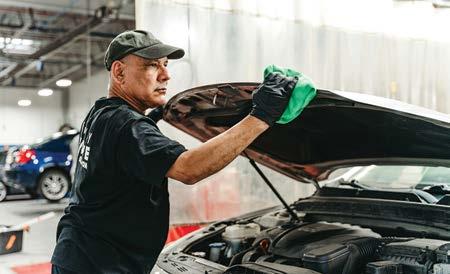
markets are important to us.”
Strandberg pointed out the Northeast region, where VIVE currently operates 46 locations in eight states, is historically short on consolidators.
Jerian said one of the biggest barriers to entry in a market can be legislative and regulatory issues. “You have to have some patience when dealing with some of the agencies and some of the states,” he said. VIVE has a team that handles things like securing permits.
“To me, the challenges were the opportunity…because nobody wants to go there and figure it out,” he said. “We’re doing a great job of working with a lot of the leaders in those markets, whether it’s relationships we
“EVs is the big thing we all talk about. But the danger of fixing those cars is there. Making sure our team is safe and secure is of the utmost importance,” Jerian said. “And then, how do we repair these vehicles properly?
“Training is huge,” he said. “We do a lot with the OEMs and I-CAR. We are also building out a lot of our own internal training programs, whether it’s welding or what have you.”
VIVE is looking at how it can leverage AI to create a better customer experience without diluting valuable human interaction. It is also embracing pre- and post-repair scans and in-house ADAS diagnostics and calibrations, as “a large amount of our facilities are on OEM programs, [and] we want to ensure we’re doing what’s right for the vehicle and for, more importantly, our customers and our team,” Jerian said.
He also thinks as production joining methods evolve, collision repair shops will see less welding and more gluing, riveting and bonding, which can be easier to teach than welding.
“I think those things will help our business and create a somewhat more process-oriented environment for us, to be able to advance our businesses to the point where we can help improve some of that [labor scarcity] that we’re seeing out there now,” he said.
Jerian said VIVE has an apprenticeship program in select locations, in which students from local tech schools are mentored by working technicians.
The company is also building “a more systematized approach,” Jerian said, with specialized teams for different steps in the repair process, allowing VIVE to bring on lesser-skilled technicians who can be elevated to the next level, rather than trying to hire enough higher-skilled A-level technicians.
VIVE’s leadership also aims to build a great business culture, which Jerian said he considers the most important aspect.
In the next five to 10 years, Jerian said, continued training to safely and properly repair vehicles will become increasingly important.
Jerian said he thinks VIVE is on a path for continued growth, “not only externally but internally with our team. That gives me the greatest joy — watching our people advance in our business and watching them grow to other levels, within our business. That’s the fun part. And I think you’ll continue to see more of that from us.”
Keep it simple, stupid. Focus on values. The most important part of a business is its team.
Continuously improve your process. “Make that part of your business where people aren’t scared to raise their hand and ask a question or say, ‘Hey, why are we doing this this way? This doesn’t make sense,’” Jerian said.
Bring passion to your business every day. “You must, must, must, must love what you do every day. If you don’t do it, why do it? If you don’t have the passion to do it, go find something that you are passionate about,” he said.
“Because I love doing this. I love the people in our business and really and truly love what we’re building here.”

Simplify your body shop processes today.
The 3M OEM Match Family of seam sealing products are engineered to help technicians of all skill levels more easily replicate the appearance and function of a vehicle’s original factory seam sealer.
The system includes our line of seam sealer matching tips and the 2K 3M™ OEM Match Epoxy Seam Sealer in 4 colors – allowing you to replicate the most common OEM seams with one simple application.

Learn more about the 3M OEM Match Family


Editor’s note: This is the second of a two-part series on this topic. Pick up the August issue of Autobody News, or visit www.autobodynews.com for the first installment.
A Guild 21 Webinar discussed what can be done to elevate the industry and ensure cars are fixed properly. In this installment, panelists talked about how they promote a healthy working environment, and their best practices for the future.
Elizabeth Stein, vice president of Strategic Initiatives for Certified Collision Group (CCG), led the panel discussion, “How to Ensure Your Collision Repair Business Has a Future.” Panelists included Jeff Butler, president of Haury’s Collision & Vintage in Seattle, WA; Ron Reichen, founder of Precision Body & Paint, Inc. in Oregon; and Erin Solis, senior vice president of Square One Systems/Coyote Vision Group.
Butler and Reichen shared examples of how they have elevated their businesses and promoted a healthy working environment.
“My philosophy in business is simple,” said Butler. “Employees first, customers second, and shareholders third. If my employees are happy and engaged and think a lot about the company they work for, they’re going to take care of customers.”
In a typical body shop, Butler said the day starts with the phones ringing, customers walking in the door while technicians are coming in, or there is a parts issue, and then an adjuster just shows up for an inspection.
“It’s 2:30 before you know it, and you just ran around all day with your hair on fire,” he said. “If you’re in chaos all the time, it’s nonfunctional.”
To maximize time, Haury’s began scheduling repairs rather than accepting walk-ins. The facility also shifted to a four-day workweek.
“Our people deserve a break, and everyone functions better when they have a schedule and can rest and decompress,” he said.
Haury’s has made it a priority to enhance communication with customers and third parties. Terms and conditions are provided at the beginning of the repair, so everyone
knows what to expect. This includes information about supplements and storage fees.
“It’s appropriate, professional, ethical and the law to let the parties know what the charges are,” Butler emphasized.
time frame we’ve suggested.”
Best Practices for the Future
Solis shared some best practices she has seen when visiting shops across the country, one of which is continuous training.

Credit: Shutterstock.
“A lot of times, the customer is thrown in the middle,” noted Stein. “It’s already a traumatic experience and it’s nice to have [the terms and conditions] up front.”
Reichen talked about the consultive approach used at Precision.
“In every industry, whether you’re getting your hair or nails done or hiring home maintenance, you schedule an appointment,” he noted. “Our industry really needs to transition to do the same.”
Reichen said it was common at his facility for five or six clients to arrive at the same time for an estimate. To address this challenge, Precision now arranges repair consultations with customers that take about an hour and 45 minutes. This provides the opportunity to explain the repair process and what the manufacturer requires. Customers pay an upfront fee that is applied to the work order.
Reichen has found this strategy has alleviated the tire kickers looking to cash out. It can also lead to additional work.
In addition to operating 8 a.m. to 5 p.m. during the weekday, Precision is open on Saturdays.
“We’re very respectful of employees and work-life balance so we rotate shifts,” said Reichen. “We also are committed to making sure that that vehicle gets delivered in the
Stein agreed about how critical it is to send staff to outside training to provide the opportunity to interact with others in the industry.
Looking ahead, Butler recommended the industry focus on building attractive businesses for future workers. This includes running profitable companies with competitive wages and benefits.
“When we have a vibrant, successful business and our team members are engaged and happy, you’re going to be able to take care of your customer,” he said. “Shareholders benefit from that.”
“Just do what’s right,” Solis recommended. “Sometimes, that can be acknowledging that maybe you don’t have the answer.”
Solis said it’s time to recognize that vehicles are not the same as 20 or 30 years ago, or even five years ago.
With vehicles changing so quickly, Solis said it’s unrealistic only to get trained yearly.
“The shops I’ve seen that are really doing the best are the ones constantly training their technicians, repair planners and office staff,” she said.
She also recommends paying close attention to clearly defined communication.
“You can’t just put a standard operating procedure (SOP) together and then hand it out to everybody,” she explained. “It has to be something that you walk through on a regular basis and do an internal audit to ensure that the process is actually happening, especially if you have more than one location.”
Solis said business owners often take training classes to become certified but aren’t the ones working on vehicles. Instead, she recommends they support employees in their training and share their vision for the business so staff can carry it out.
Although Reichen said education is a necessity, a quality control process should follow. At Precision, this occurs after each phase of the operation.
“What’s critically important is the person doing the quality control test is not the person who did the repair,” he advised.
“It’s OK to decline a repair whether it’s because the vehicle isn’t in your wheelhouse or made of substrates you aren’t set up for or it’s a brand you are not qualified to repair,” Reichen acknowledged. “People will respect that.”
He advised shops to break out of their comfort zone.
“There’s so much knowledge out there,” he said. “Don’t get your information from one source.”
He encouraged repairers to “get “involved, stay involved and participate.” This includes becoming active with state and national associations, seeking out mentors and expanding their sphere of influence by talking to repairers they value, which may include competitors in their market.
Reichen also recommends joining a Twenty Group.
“Those are great organizations to be part of, make you accountable and allow you to expand your knowledge base,” he said.
Stein added the benefit of attending conferences and meetings like CIC, SCRS and WIN to expand business practices and build connections.
She shared a quote from Tony Gaskins : “Trust the process. Your time is coming. Just do the work and the results will handle themselves.”
“Just get started,” she said. “You don’t have to be perfect. We’ve all failed, so do something different than what you’re doing today.”





a total loss versus a repair. Every insurance company exec I’ve talked to complains about very high total loss rates. Pre-pandemic, we were looking at 25% of claims resulting in a total loss. We see a lot of companies now saying it’s north of 30%.”
Also making total losses problematic: Many customers are “upside down” — have negative equity — on their vehicle.
“The average new car loan term is now 68.3 months,” Horn said. “And unfortunately, negative equity hit another record high, with the average negative equity being rolled into a new car loan is $6,167, up a full 18% from a year earlier. When you total out a vehicle and the customer has that kind of negative equity, all they end up doing is rolling an even higher amount into the new replacement vehicle loan. At some point, that’s not sustainable.
“To give you an idea of what that means, the average [car loan] payment is over $700, with 17% of all customers having a single car payment of more than $1,000 dollars,” Horn said.
Horn said he recently wrote about


the impact on claims costs on the decline of sedans and the growth in the crossovers and SUVs, which are exempt from U.S. bumper standards.
“There are about 2.2 parts more per vehicle repair for an SUV versus a sedan passenger car,” he said.
That keeps him watching which automaker models are being
Dodge doesn’t fare much better with the Dodge Durango and the Dodge Hornet being the sole surviving Dodge vehicles before they make their transition to electric vehicles.
A lot of Chrysler dealers and Dodge dealers are truly depending on used vehicles, parts and service to keep those dealerships healthy.”
Horn said while the pace of growth in EV sales has slowed, they remain an increasing segment of the vehicle population.
“J.D. Power now forecasts that the EV market share will hit 12.4% of registered vehicles in the U.S. in 2024,” Horn said. “That’s not going away. And that will impact how we do collision repair.”
but in an EV, it’s just going to be the front trunk.”
Horn said ahead of last fall’s United Auto Workers strike, some domestic automakers scaled back their pricematching programs — sometimes referred to as conquesting programs — designed to stave off competition from non-OEM parts.
“Some of the manufacturers pulled back on the population of parts that were available for conquest, preserving the margin versus expanding the sale,” Horn said. “We have seen that in the aftermath of the settlement of the UAW strike, that there really hasn’t been a complete restoration of those parts that had previously been on conquesting programs. So I’d love to hear from various parts departments how their sales are going versus aftermarket for those parts that may or may not have been taken off.” “To
discontinued, he said. Kia is “pulling the plug” on the Rio and Stinger, for example, and Stellantis has or will be halting production of the Jeep Renegade, the Jeep Cherokee, the Dodge Challenger, the Chrysler 300 and the Dodge Charger.
“Now, for those keeping score at home, that means Chrysler, until they roll out their new fleet of electric vehicle offerings, is down to a one-vehicle brand,” Horn said. “The Chrysler Pacifica is the sole Chrysler product offered new in 2024. Now,
He shared data from Mitchell showing 91% of collision parts used to repair EVs are OEM, compared to 66.5% for internal combustion engine vehicles. EVs also have fewer repairable parts because so many are lightweight aluminum or a specialized plastic that cannot be repaired. The average cost to repair an EV is still more than $900 higher.
“And EVs are 21% more likely to be drivable after a collision versus ICE vehicles,” Horn said. “If you’re rearending somebody in an ICE vehicle, you expose the air conditioning, the radiator, a lot of potential leakages,





Pro Spot’s 5 Series Spot Welders. The most sophisticated spot welders in the world now have the most versatile boom system, the Ergo Lift Assist
9' High, 5' Low, 51" Reach
Pivots Left to Right 180 °
Fits Through Doorways
Easy Movement Between Vehicles
Balanced and Safe
Ergonomic
YOUR



By John Yoswick Autobody News
As Dan Risley kicked off his first meeting as chairman of the Collision Industry Conference (CIC), held in Denver in July, he said one of his goals for leading the meeting is to foster more participation by attendees.
“I want to foster an environment that encourages your voice to be heard and your thoughts to be heard, where you feel comfortable going up to that mic and talking,” Risley said. “Don’t just be a spectator. Enjoy all the information that will be shared by the committees, but also don’t be afraid to be a participant.”
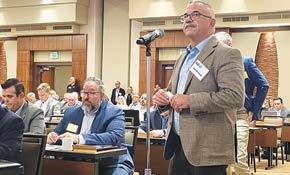
Attendees clearly took Risley at his word, with attendees lining up at the first open mic session of the meeting to question and lambast an agreement between GEICO and asTech the industry learned about the week of the meeting.
A notification sent to GEICO’s direct repair shops said the insurer, in an effort to address “the complexity of tracking a variety of price points” for calibration and scanning services from different vendors, had “reached an agreement with asTech to standardize pricing and reduce friction for diagnostic, programming and calibration operations.”
Under the agreement, GEICO wrote, decisions related to preand post-repair scans will include “consideration” of asTech’s Rules Engine, which “uses data from tens of thousands of scans to determine when a remote OEM scan is needed or when a local OEM-compatible scan can be used, which has been verified to yield equivalent results to that of an OEM tool.” GEICO is not requiring its direct repair shops use asTech, but those that do not “may need to supply additional documentation to justify procedures or pricing that deviates from those provided.” The pricing change is set to go into effect in early August.
Shops Question the Agreement
“What I don’t get is how would a
vendor enter into a standardized pricing agreement on behalf of their customer,” Barry Dorn of Dorn’s Body & Paint in Mechanicsville, VA, said during the open mic session dominated by discussion of the agreement, which included representatives of asTech working to explain and defend their decision.
“I remember when I first started coming to CIC a long time ago, we had carriers at that point that were trying to [purchase and] drop-ship parts to us and let them take care of that,” Dorn said. “So when I read this, it reminded me a lot of those days.”
Bob McSherry of North Haven Autobody in Connecticut said he isn’t interested in having one of his vendors enter into a pricing agreement with a third party on his behalf.
“I don’t need your help doing that with an entity that is not a direct customer of the service you are providing to me,” McSherry said. “This is a special kind of stupid. I’ve been a long-time (asTech) user, and I can tell you that comes to an end when I get back tomorrow.”
“Does that tell me that the OEM repair procedures that we base so many other decisions on are now secondary in this arrangement?”
DARRELL AMBERSON LAMETTRY’S COLLISION
“I strongly object to third parties engaging in negotiating, setting prices, coming up with agreements or fixing or controlling a market price on behalf of me, my industry, my customers, anything like that,” said Jeff Butler of Haury’s Collision in Seattle.
Others had questions for GEICO, including whether the insurer would expect shops that are not part of its direct repair program to accept the standardized pricing.
“I know from my own experience, oftentimes an insurer will say, ‘We only pay X because other shops accept that,’” said Darrell Amberson of LaMettry’s Collision in Minnesota.
Amberson also questioned how a recommendation from a third party like asTech that an aftermarket scan is sufficient in some instances can override automaker procedures.
“Does that tell me that the OEM repair procedures that we base so many other decisions on are now secondary in this arrangement?”
Amberson said. “In other words, they’re considering asTech the standard?”
If a representative from GEICO was at the meeting, they did not comment on the agreement, but Risley said the company would be asked if they want to present at the next CIC in November.

Representatives of asTech were at CIC, however, and responded to the questions and concerns raised about the agreement with GEICO, including defending its Rules Engine as a reliable basis for decisions related to the use of an OEM or aftermarket scan.
“We’ve done hundreds of thousands of scans with over 23,000 different vehicle make, model and trim levels using our Rules Engine,” said Jason Vilardi, vice president of sales, insurance and estimatic relations for asTech. “We have a top carrier that is endorsing that process to assist them in the decisionmaking process, which we believe is going to streamline things for our customers. Our current customers that are using us today…should not feel a change in the reimbursement process, because we’re going to make sure that they’re made whole.”
Vilardi later returned to the reimbursement issue.
“So a customer will still be in the same position they were beforehand,” he said. “They’re not making less money from us on a scan today than they made yesterday. Although the price is less, the cost is less.”
He said he believes that agreement will remove some friction points.
“Listen, this is not a mandatory thing that somebody has to follow,” he said. “Shops always still have a choice. This is something that we decided to do, that we’ll continue to do, in going down the path of trying to streamline processes for the shops in order to make their reimbursement easier.”
“If a shop wants to do OEM scans only, great,” Vilardi said.
“That’s the gold standard. And if that’s what they want to do, we can accommodate that. If they want to go another route, there’s another route out there for them. If you look at the announcement, it just said that [GEICO is] going to look at [the Rules Engine] as one of the factors to determine which way to go. It doesn’t mean just because our Rules Engine says X, they’re 100% going to follow that. It means that they’re going to take that into consideration.”
“We didn’t really take this as being this massively negative thing,” he said. “We’ve got a top carrier who most people would say they have struggled with, and now we have them bought in on what we do, how we do it, and are willing to, in our minds, step up and actually cover more OEM scans than they ever previously did.”
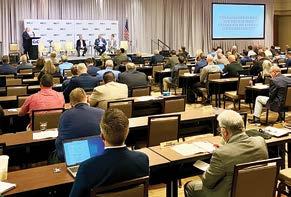
Aside from the discussion of the GEICO and asTech agreement, CIC in Denver stuck to its published agenda, which included a Parts and Materials Committee presentation focused on blending. Paint company representatives, for example, shared the increased complexity of refinish products, the role ADAS plays in refinish, and the variability in the process based on blend location, panel size and aftermarket paint protection.
Risley said the committee’s presentation helped provide the “why” behind decisions by the information providers in the last year to provide more flexibility to blend time calculations.
The Emerging Technologies Committee offered a presentation on the importance of maintenance, inspection and testing of low-voltage systems and batteries, including how the stability of a low-voltage system relates to accurate vehicle diagnostics and calibrations.
And I-CAR and ASE discussed their efforts to create tools to help ensure entry-level technicians are proficient in five key areas.

By John Yoswick Autobody News
Andrew Riggs, a collision repair instructor at Bellingham Technical College in Washington state, said his program made a change to help keep students engaged: They eliminated classroom time.
“We don’t sit our students down anymore and make them listen to us
the time we get to spend with our students is hands-on lab activities, and that’s made a huge difference.”
Riggs was part of a panel discussion on employee recruitment and retention at the Collision Industry Conference (CIC) this spring. He said one of the primary challenges facing programs such as his is the public misperception about the industry.
“The biggest thing that we fight is the stigma of this industry from the parents,” he said. “They think you’re just going to grab a hammer and beat on metal in a dark, dirty shop, and that it’s a gonowhere job,” Riggs said.
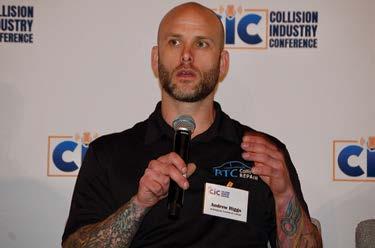
lecture,” Riggs said. “We moved that online. They can do that at home on their own time. And then when they come to the college, it’s all lab. So all

“So we have a ‘Try a Trade’ event where we get to set up resistance welders, we get to set up our virtual painter, stuff like that. So the high schoolers come in with their parents and they get to see this equipment and understand that this is not easy. This is a complicated career. There’s a lot that goes into it. We’re electricians, we’re plumbers, we’re artists. It really does change the parents’ perspective, and that has helped a lot.”
To help prospective students and their parents see the opportunities available in the industry, Riggs sometimes asks successful graduates to share their income tax returns. He removes their personal information from the paperwork, and sets them out so students and parents can see what they’re earning.
“So all the time we get to spend with our students is hands-on lab activities, and that’s made a huge difference.”
ANDREW RIGGS
BELLINGHAM TECHNICAL COLLEGE
“They don’t have to be worried about their son or their daughter going into a dead-end job,” Riggs said. “You can make a good living doing this.”
That said, he has some concerns about the entry-level wages some of his graduating students are being offered.
“What I hear a lot from my students is they’ve spent two years of their life getting this degree,” Riggs said. “They’ve spent, potentially,
thousands of dollars on tools. And when they look at jobs, they don’t want to go into a body shop and get paid less than they would if they walked into a fast-food joint. It is a big deal to my students that they put the time and money out there to invest in themselves, and they want these shops to invest in them. So shops, in my opinion, do need to step it up a little bit and offer a little bit better pay.”
He said students in his program finish with a three-month internship in a shop, usually paid.
“If that opens the door, if that shop is happy enough with them for that three months, then it turns into fulltime work after that,” he said.
Beyond wages and benefits, he said, the young people in his program are very much interested in a good work-life balance.
“They want some freedom, whether it be four-day workweeks, or the ability to build their own schedule a little bit,” Riggs said. “Maybe they can’t be in at 8 o’clock every morning because they have to get their kids off to school. From what I understand, they have no problem staying later if they can start a little later, so they can still have a family and spend some time with them.”

























Mike Anderson — From the Desk of Mike Anderson
A few months ago, I wrote a column here on measuring your technicians’ performance based on gross sales produced per tech. I’ve received some questions about it, so I wanted to revisit the topic.
Several people have said they prefer to look at technicians’ efficiency. I’m not saying you shouldn’t measure that. But to me, it’s sometimes difficult to do that accurately because you might not know if a tech is coming in early or staying late, or also working on a Saturday, for example.
Other people said they look at average sales per square foot. Again, that’s not necessarily a bad way to measure, but comparisons of this across shops can be tough. In Southern California or Hawaii, some work might be done outside, for example. And there’s the issue of whether such things as a frame machine or paint booth count as square footage.
$65,000 or $75,000 or more per person, each of the bullet points pretty much address one or more of the gaps identified by McKinsey’s analysis.
I said, for example, it could be an issue of skill sets or needed training. I mentioned just a few of the sources of training — I-CAR, 3M or BETAG — but there’s also automaker training,
“But the real issue was that each of the shops’ admin people was handling $100,000 in sales.”
— MIKE ANDERSON
paint company training, equipment manufacturer training, estimating training, etc.

So that’s why I come back to gross sales produced per technician. And I recently came across an article from McKinsey & Company, “Have you cracked the efficiency code,” and it validated my thought process. It argues there are “untapped sources of efficiency and effectiveness” behind any organization’s operations. McKinsey’s analysis found three clear and measurable reasons for a lack of productivity for any given employee. They may not have the needed skills to be successful in their role (“the skills gap”), they aren’t engaged or energized by the work (“the will gap”) or they spend time in ways that don’t increase value (“the time gap”). All of these root causes of productivity loss “can remain invisible to an organization’s leaders,” the article said.
If you look at my earlier column about what to do if your body department isn’t averaging at least
Speaking of estimating, your body department may not be hitting the benchmark because your repair plans aren’t capturing enough labor operations. Most shops think they are writing good quality estimates, but how do you really know? Enterprise’s Automated Rental Management System (ARMS) reporting will tell you what your average labor hours per estimate are compared to the market. If you are a direct repair shop or get Open Shop assignments, you probably get DRP scorecards or can check the CCC ONE Indicators Report. Belonging to a 20 group is a great way to see comparisons that reflect estimate quality. In any case, you really need a data source to verify whether your belief in the quality of your estimates is correct.
I pointed to administrative bottlenecks potentially holding your body department back (“the time gap”): They might be waiting for estimates or supplements, might be checking in their own parts, or might be doing other non-production tasks because the shop doesn’t have enough admin staff.
I was recently looking at some shops’ data, for example, and saw a shop that was producing only about $50,000 per person in the body department. They had three body techs and three apprentices, so they probably needed more training for the apprentices. Their estimate
quality wasn’t great. But the real issue was that each of the shops’ admin people was handling $100,000 in sales. That’s far too much. The industry average is about half that. They simply didn’t have the admin staff to avoid creating bottlenecks.
On the other hand, overstaffing could be keeping you from hitting the sales per body technician benchmark. Particularly this year, I’m seeing shops with more techs than they have work. That makes sense ahead of opening an additional location, or if you’re preparing for retirements of some techs. And with as challenging as it can be to find technicians, being slow to scale back your production staff may make sense. But it also could be hurting your numbers.
Also make sure you’re scheduling the right mix of work for the skillsets of your staff. Trying to get a bunch of category 5 jobs (aka trainwrecks) out the door when you have fewer A-level techs than helpers or apprentices
schedule.
I also talked about pay plans in my last column on measuring sales per employee in the body department. That could be contributing to what McKinsey called “the will gap.” You might not be sufficiently motivating them.
I didn’t mention this in my previous column on this subject, but there can also potentially be a culture issue holding your team back in terms of gross sales by tech. Is there a lack of someone leading the way?
In any case, even if you’re already at the $65,000 in sales per body tech benchmark, that doesn’t mean you can’t still work on improving the “gaps.” I know shops topping $90,000 or more in monthly sales per person in the body department. That requires hitting on all cylinders: writing “best of the best” estimates, having an exceptionally trained team, and making sure you’re “right-sized” so techs aren’t looking for work or
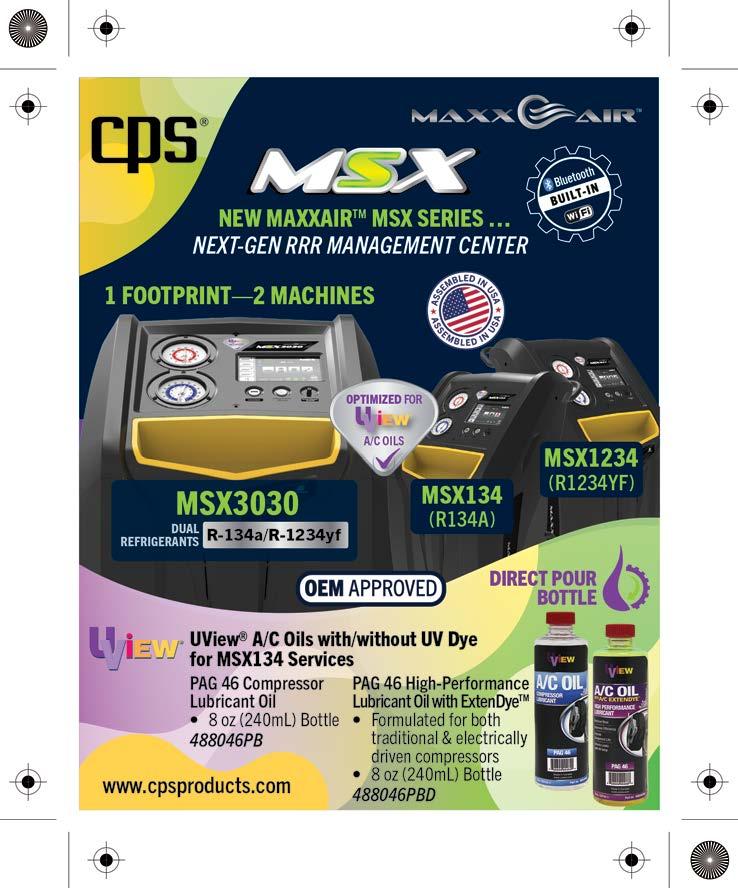








































By Abby Andrews Autobody News
SEMA’s Battle of the Builders carbuilding competition is going into its 11th year at the 2024 SEMA Show, set for Nov. 5-8 in Las Vegas, NV.
The competition has become one of the highlights of the annual show, as it showcases the best car builders and their most innovative builds. Autobody News recently spoke to three past winners of the Young Guns category, for builders 29 or younger, to find out how competing on such a big stage early in their careers helped them establish themselves in the industry, and what advice they have for other young builders thinking about taking their shot.
‘It Was Like a Rocket Ship’ Kyle Kuhnhausen grew up working in his dad’s collision shop. After earning a business degree from Oregon State University, he came back to work fulltime as a technician at his dad’s shop while opening his own business, Kuhnhausen Metal Concepts, in Creswell, OR.
Kuhnhausen has been attending the SEMA Show with his dad every year since 2012, and paid attention to the Battle of the Builders when it
was launched in 2014. He had already started working on a 1972 Datsun 240Z that he planned to take to compete someday.
In 2018, the car — dubbed “inZanity” — was ready, but he wasn’t sure how to get it there. He stumbled upon the Young Guns category — and a Goodguys car show in three days where he could win a Golden Ticket,
corral. He wasn’t on the pre-registered list to compete, but show organizers pulled some strings once they saw the car. He won the Golden Ticket.
At SEMA, Kuhnhausen’s 240Z won the Young Guns category, along with a handful of other awards, and even led the SEMA parade at the end of the show.

which came with transportation of his build to the SEMA Show, along with travel and hotel accommodations.
Kuhnhausen drove the 240Z to the show and parked it in the Young Guns
The effect on Kuhnhausen Metal Concepts was immediate.
“It was like a rocket ship,” Kuhnhausen said.
“Winning Young Guns put a huge spotlight on me. People across the world are hearing my name and seeing my work,” he said.
“The phone rings — that’s the difference, and it’s all because of SEMA putting that spotlight on me and showing me as someone who’s an expert. Without it, I’d probably still be unknown.”
Within a year of winning, Kuhnhausen had to quit his day job at his dad’s shop to concentrate on
Kuhnhausen Metal Concepts and work on the 1964 Corvette he took to compete in the Hot Rod category in 2019.
The Corvette didn’t win in 2019, but Kuhnhausen perfected it over the next year and brought it back in 2020. That year, the show was virtual-only due to the pandemic, but SEMA still held the Battle of the Builders competition. The Corvette won the Hot Rod category on its second try.
Those three years of competing showed Battle of the Builders organizers that Kuhnhausen knew what he was doing and had a good camera presence. They asked him to judge the Young Guns category in 2021.
His advice to young builders thinking about entering the competition is to go for it.
“I was building that Z car since 2012 and debuted it in 2018, but I was thinking it’s not good enough,” Kuhnhausen said. “I won [Young Guns] when I was 27, which at the time was the last year of eligibility. It’s now 29.
“As a judge, I want to find the next me,” he said. “I feel like there’s somebody out there too afraid to enter because they don’t think it’s good enough, but trust me, it’s good

enough. I just need them to put their work in the spotlight and be ready to learn.”
Kuhnhausen has stepped down from judging in 2024 so he can compete with a 1966 Corvette he’s been working on since 2020.
‘You Gotta Take the Risk’ Josh Michels of Pewaukee, WI, won the Young Guns competition in 2022 with “Blu My Mind,” a 1966 Chevrolet Corvette.
His first foray into restoration was when he was 13 and he bought a 1980 Jeep CJ-7 that needed a lot of work. His dad had experience building cars, so he taught Michels what he knew as they worked together on the Jeep for the next three years.
Michels then bought another Jeep that he restored on his own. Then another, and another. Then he told his dad he wanted to make restoration a full-time job, and they founded Michels Auto Design in 2018.
Michels said he had been watching the Battle of the Builders since it started. He wanted to compete —someday.
“I never thought [competing] was a possibility this early on until two years ago,” Michels said, when he attended a July 2022 Goodguys car show, where he met the winner of a previous Young Guns competition. Michels’ Corvette won a Golden Ticket at that show.
“When I got [to SEMA], it wasn’t like, ‘oh he’s some young guy, he doesn’t know anything’ — everyone was super supportive and welcoming,” Michels said. “The people in the industry are just amazing.”
When his car started moving up through the elimination rounds, it was “all very surreal for me,” Michels said. Then it was named the winner of the Young Guns category.
“Just meeting all those people was such a great source of connections,” he said. “You’re not alone in the industry anymore.”
Michels said he can reach out to mentors with questions about everything from handling customers to perfecting his builds. He also found sponsorships with vendors like Miller Welding and Mothers Polish through SEMA that have helped his business grow.
In 2023, he competed in the one of the pro categories with a different build, placing in the top 10 in Hot Rods.
Michels Auto Design is also staying “super busy,” with six or seven projects currently underway and more coming up. Michels plans to return to the Battle of the Builders with a new build in a couple of years.
Winning in 2022 validated his decision to pursue restoration as a fulltime job, both in his eyes and those of
clients, Michels said.
“I went on a stage in front of the best builders in the world, who judged my vehicle and said yeah, it was top notch,” Michels said.
He said other young builders should do the same.
“Just do it,” he said. “You can say you’re going to do something for the rest of your life, but it’s never gonna happen unless you just get out there and start doing it. You just gotta take the risk, believe in yourself, put a whole lot of work into it and hope for the best.”
Charles Spencer of Mesa, AZ, won the Young Guns category in 2023 with his 1969 Chevy C10. He was 19 — the youngest champion to date — but the truck was a multi-year labor of love he started when he was 14.
Spencer first became interested in restoration when he was 5, working on radio-controlled cars with his dad and helping his dad and grandpa at their shop, Charly’s Garage in Mesa.
Spencer found out about the Young Guns category at Battle of the Builders a few months before he finished his C10.
“I didn’t originally know about this when I started my build, but as soon as I found out about it, I was super excited to go compete against people around
my age and show everyone what I was capable of building,” he said.
Competing at SEMA was incredible, Spencer said, and he enjoyed meeting other builders and talking with them about their own builds. He said he also got tips from some of the more experienced builders, as “everyone was very friendly.”
The competition “opened doors for me, getting me the recognition for my build, and helped me make a few connections for possible sponsorships for my future SEMA build,” Spencer said.
Less than a year later, Spencer is working on an associate’s degree in automotive service with an emphasis on science technology at Mesa Community College. He is also working with his dad, brothers and grandparents at Charly’s Garage, adding to his knowledge and skills. And he’s working on another build for a future SEMA show.
He encouraged fellow young builders to get as much experience as possible because the best way to learn is from successes and mistakes.
“I would also encourage them to look at getting tools at a young age, to take advantage of the deals and discounts that they can get while they are in school, because tools are one of the biggest costs for a technician,” Spencer said.





In 1978, Bob and Norma Wiese opened B Street Auto Body on B Street in Omaha, NE. Their vision was to be the “premier post-collision service provider in the region. The husband-and-wife team ran the shop with a couple of technicians who were repairing vehicles.
The business was later renamed B Street Collision Center. Although
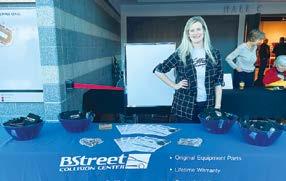
the Wieses eventually moved from that location, they maintained their commitment to unparalleled quality for customers.
The company has grown to include about 300 employees and 12 locations in Nebraska and Kansas.
Autobody News spoke to Emily Workman, human resources recruiter at B Street Collision Center, about the company’s hiring and retention strategies, what makes their business unique and how community involvement is important in their business.
Q: How has your background helped you connect with prospective employees?
A: When you work in a familyowned and -operated world, you wear a lot of hats. I was hired as the human resources manager/recruiter nearly six years ago.
I’ve always been passionate and an advocate for the trades. I
In 1999, their children, Tony, Zach and Bob, began running the business and share their parents’ passion for exceeding customer expectations. Their decades of hard work and dedication to family values have helped the business flourish.
attended a trade school as a business student and interned with a college in the admissions department. My job entailed recruiting high school students for the college.
As much as I enjoyed that experience, I didn’t know how to apply it, so I worked in retail over the next decade. I

realized how much I missed the trades and learned about a job opening at B Street. One of my first meetings was with the owners. That spoke extremely loudly to me. It was a really cool moment to realize they valued this position so much that they took time out to meet me.

Part of my role is reaching out to trade schools and students. Understanding the different types of education, whether it’s a trade school or university or going straight into the workforce, has been beneficial and helped me connect with candidates.
Q: What recruiting and retention strategies have you implemented?
A: We take pride in being selfaware and transparent, with an understanding that we need to grow departments such as HR and recruiting. I work alongside two HR managers, allowing us to split up responsibilities. Having designated individuals for the team to go to has been extremely beneficial, whether that’s an employee with questions about benefits or a manager looking to fill a new role. As far as recruiting, we maintain a job board and regularly post positions. We also use social media to ensure our brand and logo are recognized. I never thought I would have a TikTok account or use Instagram, but both


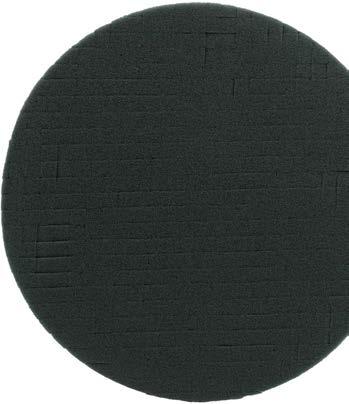
have worked well for recruiting. Even spending 15 minutes on TikTok can help get your logo in front of someone.
One of our HR managers assists with employee benefits. In addition to providing health, vision and dental coverage, we have a retirement plan and life insurance. Offering benefits is attractive to a candidate looking for a job and comparing employers. It also helps with retention.
It’s important to invest in the next generation of technicians and develop a career path for them. They have gone out of their way to learn a trade and skill set. I highly recommend getting involved in the industry, whether it’s through auto body associations or advisory school boards.
We work closely with many schools and I sit on several school advisory boards. The schools often ask us to review their curriculum to ensure they are teaching the right things in the right order. By getting involved, you can essentially help mold your next technician.
It’s that candidate who doesn’t know they want a new job that’s harder to find. We attend every career fair possible and usually take a technician or a manager so the message isn’t just from a recruiter. It’s coming from someone who can put their hands on a car and share a real-life experience. I enjoy presenting to schools
about our industry and have spoken to just about every age group, from elementary school to someone making a career change later in life. We constantly invite high schools to come in and tour our shops.
There are always challenges. However, building relationships with the next generation of technicians has helped us find individuals to hire.
A:
How has your culture helped with retention?
A company’s culture is a huge piece of ensuring retention. We work as a team and encourage a high level of camaraderie and open communication. We work hard when we’re here. It’s heads down, hands on and there is definitely a lot of intensity in our four walls, but we also pay attention to a work-life balance. We’re good listeners and want to hear the needs and wants of employees.
All shops have a 15-minute team meeting everyday to touch base and ensure we are on the same page. In addition, the management team and owners meet bimonthly or monthly as needed.
We’re a very sleeves-rolled-up, T-shirt-and-jeans kind of company and our owners are really engaged. It’s like a family where everyone supports each other. Whenever possible, we host get-togethers with employees,
whether it’s a summer party, a trunk-ortreat during Halloween or our annual Christmas party.
Q:A:
What sets the business apart?
The layout of the buildings is unique. Everything is processdriven and done very intentionally. I don’t mean that as a standard operating procedure (SOP) that sits on a shelf. I mean that in the sense of physically where things exist in our building.
We operated as a traditional shop, with an estimator, body tech and paint tech, until around 2005, when we developed a team process. Some refer to it as an assembly line setup. We developed a set of specialists who focus on each step of repair. Since implementing that model, we’ve found it really promotes teamwork.
In addition, we have a three-part strategy that defines our commitment to quality repair. First, our estimators focus on educating customers rather than selling to them. When a vehicle owner is properly informed, we believe they will make a decision that is in the best interest of their car.
Second, our technicians are trained and certified to ensure we provide the safest and most reliable collision repair. Lastly, our shops are equipped with state-of-the-art equipment to ensure




safe, accurate and reliable repairs approved by the vehicle manufacturer.
Q: What type of community involvement is B Street part of?
A: Instead of staying on the sidelines and focusing only on providing collision repair, we have chosen to contribute to bettering our communities.
We’re proud to be part of a vast network of charitable events and organizations. If you’re going to be part of a community, you have to be involved and give back. We try our hardest to get involved in events being held. We like to be hands-on so we’ll take some managers or technicians with us. It goes back to camaraderie. We have a lot of big-hearted individuals who work here and we like being around each other. If you think about it, we help people all day.
Two months after I joined B Street, one of the owners asked me how things were going. He said at the end of the day, we’re a business and we fix cars. A customer’s vehicle might be the largest purchase they’ve made and they’re trusting it with us so they can put their loved ones into it. Therefore, we must do a great job. That mindset is why we are so involved in the community we are part of.
By Paul Hughes Autobody News
Keaton Lee once cared for horses. Now she does the same for horsepower.
Lee, who turned 19 in June, runs Crazy K Kustomz, which mainly paints stuff from a booth near Coeur d’Alene, ID. Hard to limit it to that town, though, what with plenty of vacationers and Lee’s Instagram following, which is north of 37,000.
Half her business comes from online. “They ship their parts in, and I ship them back,” Lee said.
Mostly motorcycle parts, but hard to limit that, too. Also trucks, wall art and refrigerators. “I can pretty much

paint anything people want custompainted.”
Refrigerators?
“Vintage ones,” she texted. “People like them in their ‘man caves’ or vacation houses.”
She’s done an electric guitar.
Lee did a low-rider ST for the Harley-Davidson dealership. Custom paint, sold off the showroom floor.
She’s painted her own vehicles, including a first-gen Dodge truck and 1974 Ironhead Harley cut to a chopper: “A really old-school bike, with a kick-start. I personally like the older vehicles, which is why I own them.”
Lee leaves cards with local merchants, ones where people also seeking custom work might be. Tattoo shops are next. She’s done work for vehicles headed to shows. The local paper profiled her.
A year ago, Lee was on a one-hour Zoom podcast with the reality show “All Girls Garage.”
“People treat their bikes as an extension of their body,” she said. “It’s deeply personal, and they pay for doing it well.”
Bikes with a lot of parts — a bagger motorcycle, say — could run to the high four figures.
She graduated from Kootenai Technical Education Campus in June 2023, a nearby high school program run by North Idaho College.
Instructor Andy Rogge noted Lee’s unusual self-motivation and artist’s eye, both wrapped in a personality best called vivacious. She dove into painting — research, new challenges — grew into it, and is making it her own.
“Always on the move, not any sort of lazy,” he said. “Keeps expanding, trying something new, shows what she can do -- people are going to see that.”
Lee — painter of bodies fourwheeled, two-wheeled and none — demurs.
“I wasn’t the best painter,” Lee says. “I’m still not the best painter.”
Rogge said his own passion for custom painting helps him spot it in students. “Find something you love doing, and figure out how to make money doing it.”
Lee connects with others, he said. At a national competition as a student, she “drew a certain type of attention. Snap-On wanting to interview her — partly for being the girl, but it was her personality.”
Rogge called her family “so awesome” in their support of Lee. “They let her go how she wanted, gave her what she needed to do it.”
They’d been living in Washington, Lee recalled, and on turning 16, she’d gotten a job with an upholsterer. COVID hit, her high school was “doing nothing,” and the family moved to Idaho.
Lee had to quit that first job and the KTEC class was full. She wangled her way in, and discovered painting.
Her parents are at their Idaho digs. Keaton lives with her brother, Walker, who owns a truck he’s started a small business with, hauling dirt for construction. She’s got two dogs: Smokey and Bandit, the former being her “shop dog” who goes to work with her.
Her continuing education has taken her to California and Arizona.
“Pretty much like a class, 15 people or so, custom painters all painting something that weekend. We learn
from each other, meet a lot of people,” for networking, she said.
Pinstripe Prime
“Once you learn the main part of painting, and the custom side, it’s mostly tips and tricks,” Lee said. “I
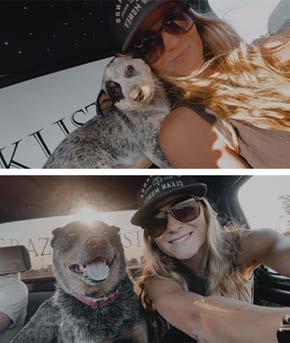
have a lot of questions and you’re meeting people you can talk with in the future.”
That future is happening one fridge at a time.
She shares space with another
restorer, who does body work. She brings her own work to the site — at first, too much of it.
“I gave myself some pretty tight deadlines,” she said, working through weekends.
She’s slowed her pace a bit, but “I’m still new, I have to do everything.”
The business is developing the way a job itself does, as Rogge explained.
“You may have an idea of what you want, but by the time you start taping it, and working with the shape of the panel, it starts to develop. She has an idea and she starts rolling with it and lets it design itself.”
Like a specific job, too.
While still a student, Lee took on a 1970s Suburban, Rogge recalled. Challenging “even for seasoned painters, she took it and didn’t let the size scare her.”
Lee marks out pinstriping as an illustrative challenge.
“Hand pinstriping takes a long time to learn: keeping the lines straight, the paint thinned out, the way you turn a brush to make corner.”
Why do it, then?
It’s another challenge.
“There’s pinstripe art, so if you learn how, if I can get confident at it, I can set up a pop-up booth at car shows and just paint.”




































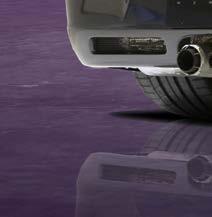



























































Unlock savings and precision fit with genuine parts

• Save time and money: reduce returns by up to 16%
• Faster ordering process
• More accurate orders
• Easier invoice processing
• Live information
• Seamless fit
• Competitive pricing
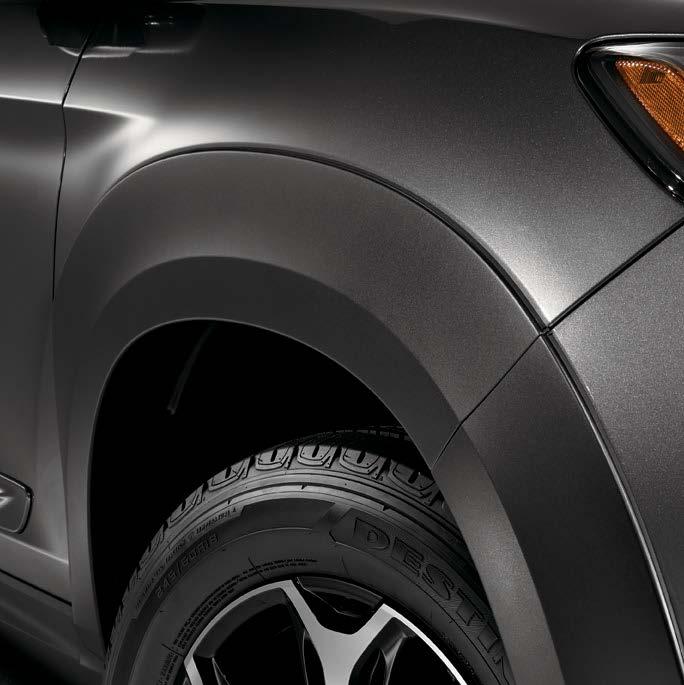
Please contact these dealers for your
Barber Honda
Bakersfield
661-396-4235
Dept Hours: M-F 8-5:30 bestchoice@barberhonda com
Capitol Honda
San Jose
408-445-4412
Dept Hours: Mon-Sat 7:30-6; Sun 8-5 sbettencourt@penskeautomotive com
Concord Honda
Concord
925-825-8016
Dept Hours: M-F 8-6 kevin valenzuela@concordhonda com
Galpin Honda
Mission Hills
800-GO GALPIN
818-778-2005
Dept Hours: M-F 7:30-6; Sat 8-2 mteeman@galpin com
Honda of El Cajon El Cajon
619-440-5851
Dept Hours: M-F 7-6; Sat 7-5 parts@hondaofelcajon com
Honda of Hollywood Hollywood 800-371-3719
323-466-3205
Dept Hours: M-F 8-6 parts@hondaofhollywood com
ACURA
Acura of Concord Concord
925-680-4233
Dept Hours: Mon-Sat 7-6 keith�whisten@cacargroup�com
Acura of Fremont Fremont
888-435-0504
510-431-2560
Dept Hours: M-F 8-6; Sat 8-5 mike ohare@acuraoffremont com
Acura of Pleasanton Pleasanton
888-985-6342
925-251-7126
Dept Hours: M-F 7:30-6; Sat 8-6 mitch cash@hendrickauto com
Honda of Pasadena Pasadena
800-433-0676
626-683-5880
Dept Hours: M-F 8-6; Sat 8-4
Honda of the Desert Cathedral City 760-770-0828
Dept Hours: M-F 7-6; Sat 7-5 mpartridge@honda111 com
Keyes Honda Van Nuys
818-756-6549
Dept Hours: M-F 8-6; Sat 8-5 malvarez@keyeshonda com
Larry Hopkins Honda Sunnyvale 408-720-0221
408-736-2608
Dept� Hours: M-Sat 8-5 parts1@hopkinsdirect com
Metro Honda Montclair 800-446-5697
909-625-8960
Dept Hours: M-F 7:30-5:30; Sat 7:30-4 wholesaleparts@metrohonda�com
Pacific Honda San Diego 858-565-9402 jgardiner@pacifichonda com
AutoNation Acura Torrance
310-784-8664
310-539-3636
Dept Hours: M-F 7-7; Sat 8-5 alvaradow1@autonation com
Bakersfield Acura
Bakersfield
661-381-2600
Dept Hours: M-F 7:30-5:30 bakersfieldacuraservice@yahoo com
Marin Acura
Corte Madera
800-77-Acura
415-927-5350
Dept Hours: M-F 8-5:30; Sat 8-4 parts@marinacura com
San Francisco Honda San Francisco 415-913-5125
Dept Hours: M-F 8-5 partsws@sfhonda com
Scott Robinson Honda Torrance 310-371-8320
Dept Hours: M-F 7-6:30; Sat 7-5 mluna@scottrobinson com
Selma Honda Selma
800-717-3562
559-891-5111
Dept Hours: M-F 7-6; Sat 7:30-4:30 hondapartsmgr@selmaautomall com
Larry H. Miller Honda Boise 888-941-2218 208-947-6060
Dept Hours: M-F 7-6; Sat 8-5
Hinshaw’s Honda Auburn 253-288-1069
Dept Hours: M-F 7-6; Sat 7:30-4:30 rickb@hinshaws com
McCurley Integrity
Honda
Richland
800-456-6257
509-547-7924
Dept Hours: M-F 8-5:30; Sat 8-4 hondaparts@mccurley net
South Tacoma Honda Tacoma
888-497-2410
253-474-7541
Dept Hours: M-F 7:30-6; Sat 8-5 bgregory@southtacomahonda com
Metro Acura Montclair
800-446-5697
909-625-8960
Dept Hours: M-F 7:30-5:30 wholesaleparts@metrohonda com
Acura of Honolulu Honolulu
808-942-4557
Dept Hours: M-F 8-5; Sat 8-4 RayleenGarcia@lithia com
Hinshaw’s Acura Fife
253-926-3331
Dept Hours: M-F 7-6; Sat 8-5 johnny@hinshaws�com
By Abby Andrews Autobody News
The National Automotive Service Task Force (NASTF) is a nonprofit that works with state and federal governments, OEMs, law enforcement agencies and other organizations to close the gaps in OEM service and tool information for independent repairers, and combat high-tech vehicle theft through a service professional credentialing program.
Donny Seyfer, executive officer for NASTF, spoke about his organization’s efforts and how they benefit collision repairers during the latest episode of AirPro Diagnostic’s TechTalk360 webinar series.
A full replay of the presentation is availableonAirPro’sYouTubechannel,www. youtube.com/@airprodiagnostics1282.
Seyfer said NASTF was founded in 2000 by automakers and the independent aftermarket with a mission to identify and resolve gaps in information about OE service, tools and availability, and training. It differs from www.oem1stop.com
Only two states, Maine and Massachusetts, currently have a Right to Repair law that covers the automotive industry, guaranteeing independent repairers’ access to vehicle repair data. All other states and the federal level are covered by “a tapestry of agreements and regulations,” Seyfer said.
NASTF provides a “level playing field for all industry professionals” by working with OEMs on behalf of its members, and acting as a liaison when a member needs to speak directly to an OEM.
“The good news: 87% of OEMS comply,” Seyfer said.
There are three levels of NASTF membership. The free level provides access to OEM pages that include each brand’s service, subscription and support information, as well as any links to the OEM’s website for additional resources.
Free members can also make Service Information Requests when they run into an issue they can’t
the membership has grown to the point NASTF can’t handle the call volume, so it recently implemented a Support Ticketing System.
“Now we call you,” Seyfer said. The turnaround is generally 40 minutes to two hours.
He said most inquiries can be solved just by emailing back a link to an existing document on the

website. If it can’t be done in at least two emails, NASTF will call the member.
“We can do up to 400 tickets a day” this way,” Seyfer said.
Members can also browse the Knowledge Base, searchable by VIN, model year or technical problem, based on questions NASTF has gotten from members.

The following dealerships are eager to serve your needs. Call your local Subaru collision parts specialist today!


Subaru of San Bernardino
San Bernardino (909) 888-8686 (909) 571-5483 Fax Mon.-Fri. 7:30-7; Sat 7:30-5 parts@subarusb.com www.sbsubaru.com
“There are 400+ tech documents for programming cars and security operations,” Seyfer said. “Technicians had to learn how to fix these problems the hard way.”
For a one-time $45 fee, members can become an AIR Security Technician. In addition to the benefits for free members, AIR Security Technicians get access to the additional resources linked on the OEM pages and remote programming.
Since 2007, NASTF has run the Vehicle Security Professional (VSP) Registry program, part of its Secure Data Release Model, which allows OEMs to share security related information and tool functions with independent repairers and locksmiths.
The SDRM and registry is meant to combat the use of technology that has contributed to a surge in vehicle thefts, by securing the tools used to make new key fobs – now the No. 1 way to steal a car — to deter wouldbe thieves from breaking into repair shops and locksmith vans and, in
Parts Hotline (866) 662-2819 (360) 716-2553 24 Hr Fax Mon.-Fri. 7-6; Sat. 8-4:30 wholesaleparts@kendallauto.com scotteney@kendallauto.com www.kendallsubarumarysville.com SO. CALIFORNIA
Santa Cruz Subaru
Santa Cruz (888) 844-7131 (831) 420-1402 (831) 420-1923 Fax
Mon.-Fri. 7:30-6; Sat. 8-5 parts@santacruzsubaru.com www.santacruzsubaru.com
Kendall Subaru of Marysville Marysville



some cases, even ambushing the locksmiths themselves to steal them.
“We haven’t seen [theft] numbers like this since before vehicles had anti-theft systems,” Seyfer said. Thefts topped 1 million for the year in 2022 and 2023.
NASTF only credentials professionals who have a legit business and reason they need access to vehicles’ security information. Registration costs $425 every two years.
“We do a background check unlike anything else in the auto industry,” Seyfer said.
The next step is requiring a VSP ID to use an aftermarket scan tool to add a new key or do an immobilizer reset. Transactions will also be stored in a database.
“We’re trying to stop the tool theft by making them only useful to who owns it,” Seyfer said.
The VSP verification process will not otherwise affect diagnostic functions on those tools.
“You do not have to be a VSP to use the tool, except to perform those functions,” Seyfer said. He said it mostly applies to locksmiths, but collision repairers should register for a VSP ID in case they need to.
Seyfer said the registry is “not a
money grab, not a way to lock you out of your tools, or government intervention.”
“It’s kinda punishing the good actors because bad actors cause us the problems, so we all have to step up,” he said. “It’s not going away, so let’s just embrace it and all try to make it as easy and powerful as possible.”
Seyfer said not all aftermarket scan tools are launching the VSP ID requirement at the same time, but he thinks the companies not participating will change their minds when other tools aren’t being used in crimes anymore.
Jordan Hendler, who cohosted the webinar, said she thinks background checks will become “the next thing in [the collision repair] industry,” as repairers are able to access personal data stored in more vehicles.
George Avery, who also cohosted, said he thinks that could boost a repairer’s credibility in customers’ eyes.
“It can show I’ve crossed the T’s and dotted the I’s and will make sure nothing happens with that vehicle information,” he said.
Find more information at wp.nastf.org. The next AirPro Diagnostics TechTalk360 webinar is set for Sept. 25.

Audi Part Professionals are experts on collision parts, replacement components and mechanical items.
Fiat Chrysler Automobiles (FCA) announced a recall affecting more than 340,000 vehicles due to a potentially serious issue with front seat airbags that could fail in the event of a crash. The recall spans several models, including Alfa Romeo, Fiat and Jeep vehicles, due to a defect related to the seat belt buckle switch sensors.
The problem, which involves a disrupted connector on the buckle switch hall effect, was first identified through nearly 500 field reports in North America within a sevenmonth period. The defect may cause the front seat airbags to malfunction if the seat belt buckle switch sensors are not connected correctly, posing a significant safety risk.
The affected models include: 2017-2024 Alfa Romeo Giulia 2018-2025 Alfa Romeo Stelvio 2019-2023 Fiat 500X 2019-2023 Jeep Renegade 2024 Fiat 500e
“A disrupted connector on the buckle switch hall effect may affect the conduction on the connectors of the seat wiring and buckle,
Audi Rocklin
Rocklin
866.948.0048
916.836.1286
916.836.1293 Fax
Order Audi Genuine Parts from these select dealers.
which may cause the front seat airbag to not perform as expected during a crash,” FCA stated in their press release.
FCA initiated an investigation in November 2023 following reports from Europe about illuminated airbag warning lights. An occupant might become aware of this issue if the airbag warning light is on and a buzzer sounds even when the seat belt is fastened.
In addition to the U.S., the recall also extends to Canada, where 8,387 vehicles are affected. FCA reported there have been no crashes or injuries related to this defect. Chrysler plans to mail out recall letters by Aug. 22. Dealers will repair the seat belt buckle switch sensor connections, and if necessary, replace the connector by directly wiring the sensor to the harness with a solder tube. Alfa Romeo, Fiat and Jeep owners can contact FCA at 800-853-1403 and refer to recall number 82B for more information.
Check for open recalls on any vehicle using a VIN or license plate number at www.nhtsa.gov/recalls.
Audi Seattle
Seattle
206.634.8200
206.547.1581 Fax

M-F 7:30am-6pm Sat 8am-5pm parts@audirocklin.com
Niello Audi
Sacramento
916-480-2851
916.483.1963 Fax
M-S 8am-5pm audi.parts@niello.com www.audi.niello.com
Santa Monica Audi
Santa Monica
310.481.8216
310.393.6982 Fax
M-F 7:30am-5pm wholesale@santamonicaaudi.com www.santamonicaaudi.com
M-F 7am-6pm parts@uvwaudi.com www.audiseattle.com
Regardless of the age of your customer’s Audi, Audi dealers have access to over 200,000 part numbers and are supported by a nationwide network of distribution centers to help ensure non-stocked parts are delivered the next day.
By Brian Bradley Autobody News
Independent collision repair shops consider factors like real estate, anticipated turnover and direct repair program compatibility when examining acquisition by a larger company, analysts recently told Autobody News.
Last year saw 366 mergers and acquisitions in the automotive aftermarket totaling $11.2 billion, according to a January report by global investment bank Hamilton Lokey. The value was a five-year low, but the number of acquisitions was the second highest in five years, only surpassed by 2021’s 437 total transactions.

Smaller shops should evaluate these and additional elements before executing any acquisition or sharedequity agreement with a bigger multiple-shop operator or private equity firm, according to consultants.
Even though the market is sagging partly due to high interest rates and tepid consumer sentiment, demand for repairs will likely remain solid partly due to an aging and expanding pool of U.S. vehicles, according to an October report by advisory and investment firm Capstone Partners.
Buyers in the automotive aftermarket were more selective about paying premium valuations amid higher interest rates in 2023, but Capstone still noted the industry as a “hotbed” of investment activity, as the nature of repair and maintenance insulates the industry from “broader macroeconomic headwinds.”
With the automotive aftermarket industry poised to grow, Autobody News interviewed several analysts to glean considerations mom-andpop shops across the country should contemplate before deciding whether to be acquired by a larger entity.
Acquirers commonly use earnings before interest, taxes, depreciation and amortization (EBITDA) as a key measure of a target company’s health before striking an acquisition.
Having three to five years of strong EBITDA is a key indicator a company may be ready to move to acquisition, said Matt Lofton, director of coaching for automotive consulting firm Elite Worldwide.
A very important piece of that calculation is making sure major discretionary expenses are actually necessary; for instance, calculating the total cost of a major planned annual expense and comparing it with expected cash flow over the next five years can help companies calculate whether the investment is worthwhile or cuts too much into margin, Lofton said.
Such expenses can significantly
devalue a company if they’re unnecessary, he said.
Lofton, who also owns StrutDaddy’s Complete Car Care in Roxbury, NC, advised shop owners to build their business from the outset as if it’s going to be acquired.
Stable revenue and strong performance over roughly three to five years isn’t essential for repair shops to garner acquisition interest, but it generally helps put upward pressure on transaction values, noted George Kiwada, partner at Bain & Company and leader of Automotive in Bain’s private equity practice.
While having a diverse range of services can help companies balance their offerings, it can also be superfluous for potential acquirers that don’t have mechanical, glass or paintless dent repair, for example, as part of their business model, said Barry Neal, a senior partner and automotive consultant for global management consulting firm Roland Berger. To be folded into the new firm, services must fit the parent company’s strategy and facilitate ease of integration, he said.


A larger MSO “should have some DRP management in place to help you optimize the way that you work with your customers,” Neal said. “And they should have a bit of a methodology already for how they do integration and drive it.”
Kiwada noted larger operators will help just-acquired shops to migrate their DRP relationships into the new framework.
One shop owner indicated too many DRPs can actually work against a company’s success, particularly shops with OEM certs. VIVE Collision CEO and co-founder Vartan Jerian Jr. recently said on The Collision Vision podcast that some of the chain’s locations don’t have any DRPs, partly because it “creates an issue” to add too many DRPs to a facility with OEM certifications.
There are pros and cons to selling real estate as part of an acquisition, Lofton wrote in an email.
“The real estate is often the largest part of the business valuation, so the downside to not selling that along with the business is that the cash value of the sale will be reduced significantly,” he wrote. “The upside is that the owner still has residual income for years to come and still has
an appreciating physical asset in their portfolio.”
Shops considering selling to a larger, corporate buyer can expect the latter to push for real estate to be included in the transaction, Lofton said.
National collision repair companies prioritize new real estate or “greenfield,” particularly for purposes of regional expansion and overall density, according to Neal.
But shops should be mindful that some acquisitions may bring about the post-transaction shuttering of certain locations close to the company’s existing facilities, he noted.
A November report by automotive M&A advisory firm FOCUS Advisors noted as auto repair consolidators’ growth is accelerating, mom-and-pop shops are consistently closing.
Most major outfits are generally interested both in new real estate and bringing in their own management style post-acquisition, Kiwada said.
An “operationally rigorous” collision center like Caliber Collision installs its own standard operating procedures post-acquisition, which can be palatable for some independent shop owners who don’t mind sacrificing
and for shop owners exiting the industry, Kiwada said.
“If on the other hand, you want to stick around and you want to continue to make a lot of decisions, that’s going to steer you to a different set of buyers,” he added. “There are a lot of smaller private equity firms who are very interested in participating in collision.”
Operations will change postacquisition. The questions are how much and to what degree.
Independent shops can vet several practices of potential acquirers, Neal said, like opportunities for people development, including training for area and regional managers, as well as whether the larger entity has teams dedicated to calibration, scanning, OE tools or educational training.
Capstone Managing Director Yogi Punjabi, lead contributor of the October report who advises companies on M&A in the automotive repair industry, told Autobody News many larger acquirers are looking for good technicians at independent shops who can professionally develop under the new company banner.
Though independent shop executives often don’t stay after an acquisition, mid- to senior-level managers — such as store supervisors and area managers — frequently have opportunities to move up and



manage a wider region under a major consolidator, Punjabi noted.
Companies with younger employees, cutting-edge equipment and consistent financial stability should probably keep ownership of their business over the next five years, Lofton said.
There’s another set of considerations on the flipside. “If your equipment is 20 years old, you’re getting ready to have to reinvest in equipment, then your overhead’s getting ready to double,” he said. If “your lead technician is 55 years old and he’s been with you for 20 years, and you’re getting ready to have to replace him with a younger person in the open market, your overhead’s getting ready to go way up.”
In that situation, “it would be worth looking at any reasonable offer,” Lofton said.
Generally, it behooves shops to be patient in considering an acquisition, as the U.S. car parc continues steadily aging and expanding, Kiwada said.
Shops would ideally sell amid strong profits in a good interest rate environment, he added, but the absence of such a circumstance shouldn’t stop shops from getting acquired if it’s the right time for shop owners.















By Abby Andrews Autobody News
With more than 1,700 stores across 41 states, Caliber Collision is by far the largest MSO in the U.S. collision repair industry. Todd Dillender has been with Caliber since 1998, when the shop he was working for became just its ninth location, and has since risen through the ranks to become its COO.
Dillender was the guest on the final episode of the “MSO Chronicles” series on The Collision Vision podcast, driven by Autobody News and hosted by Cole Strandberg. He talked about the organization’s success and the lessons that can be learned by operators looking to grow on any scale.
From Floor Sweeper to COO Dillender got his start in the collision repair industry in 1992 in the aforementioned independent shop in Southern California, sweeping floors and washing cars, and progressing from there. After the acquisition, Dillender stayed at that location until 2006, when he moved to the Dallas-Fort Worth area. There, he ran a couple of Caliber stores before
moving up into a regional manager and then vice president role. He was promoted to his current position as chief operating officer in 2023.
During his tenure with Caliber, Dillender has seen it flourish to its current footprint, bolstered partly by its merger with ABRA in 2019.
“It’s been a fun ride,” Dillender said. “I just really love the team that we work with.”
had a good day if he was able to do something to make technicians’ jobs easier.
“[Caliber has] been a been a huge support for me in this first year, allowing me to do some unique things for the for the center level teammates,” Dillender said.
When Dillender was the general manager at the Southern California shop where he started, he said he

Dillender said his experience at the shop level gave him a direct understanding of what the people working in Caliber’s stores deal with on a daily basis. He said he’s



had a habit of putting off completing tasks he said he would take care of, until a technician addressed it.
“He cared enough to sit down and have a chat with me and said, ‘Look





Todd, if there’s one thing you’ve got to figure out as a leader, in any business, you’ve got to do what you say you’re going to do and you’ve got to do it when you say you’re going to do it,’” Dillender said. “I was in my mid20s at the time and it just hit home.”
Dillender said that was a “pivotal moment” that made him grateful for people like that technician who have helped him grow as a leader.
The turning point in Caliber’s growth trajectory was in 2009, when Steve Grimshaw joined the company as CEO, Dillender said. At the time, Caliber had 68 stores and was growing mainly through acquisitions and some brownfields.
Grimshaw, who is now chair of Caliber’s Board of Directors, identified Caliber’s purpose, which is still the company’s slogan today: “Restoring the Rhythm of Your Life.” Dillender said when he first heard it, he thought, “there’s another poster on the wall,” but it proved to be the catalyst for a dramatic shift.
“It just exploded. It was like lightning in a bottle,” Dillender said. The company focused on growth to be able to create that next step up for its employees.
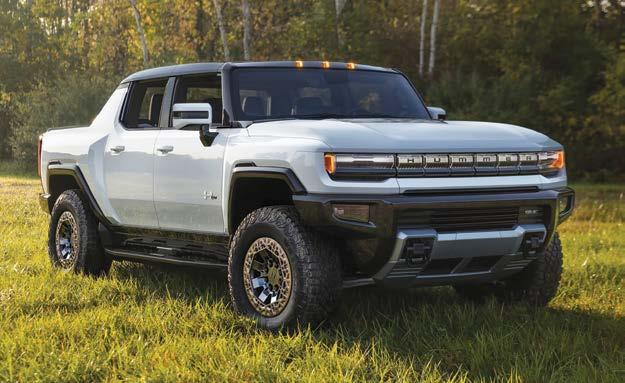














“If it’s a general manager and you want to make sure they have an opportunity to be a regional manager, you’ve got to add some stores,” Dillender said. “When that was the focus versus a bunch of buildings, it just completely changed the game for us. And you can see the result.”
Company culture is also important, Dillender said, but it’s driven by the teammates at the store level. “I can talk about our culture and what we want it to be and what we believe it is. But at the end of the day, it’s those four walls in the communities of each of these centers. That’s where our culture exists, and it’s up to those teammates. So my role is to support them.”
For example, Caliber’s annual Restoring You Food Drive, which this summer provided 5 million meals to children nationwide, started at two of its stores in Colorado. “That wasn’t a top-down ‘we’re going to support this food drive and everybody has to do these things,’” Dillender said.
To maintain repair quality consistency across its stores, Caliber launched a “quality technical coach” program, taking about 50 techs out of its stores to “put a second set of eyes across the country on the quality of repairs, especially on those most complex repairs,” Dillender said. The
program is also a resource for storelevel employees to reach out to for information or support.
In 2022, Caliber established its Technician Apprenticeship Program (TAP), which pairs aspiring techs with experienced ones who serve as a mentor as the apprentice completes 13 I-CAR competencies over an average of 10 months to a year.
Dillender said the program wasn’t created until Caliber’s technicians said they would be on board. “They love doing this. They love the idea of being able to pass down this trade that at one point somebody taught them,” he said.
The apprentices also get to complete the competencies at their own pace. The goal is to make sure when they graduate, they can stand on their own.
Caliber has already graduated 1,600 new technicians, with another 2,000 currently training. Caliber recruits them from high school and tech school partners, as well as through its Changing Lanes program that helps military members transition to a job in civilian life.
Considering projections say the industry will need more than 100,000 new technicians over the next several years, Dillender said TAP is “still scratching the surface,” but it’s helping Caliber address that potential shortfall.

It’s also benefited the mentors. “You have technicians who have been doing this for 30-plus years, getting a new spark that you wouldn’t have guessed they had in them,” Dillender said.
Vehicle complexity will continue to increase, and the materials used to build them will continue to evolve, necessitating continued training -not just for the technicians working on the cars, but also for the front office. “It’s about leveraging technology,” Dillender said.
Caliber’s service advisors are already using an AI-powered tool to find the repair information they need quicker. Dillender didn’t want to give away any more than that, but said, “We’ve got a pretty cool tool. You’d have to come work with us to get the answer to it. But I can tell you it’s a game changer.”
Looking at the next five to 10 years for Caliber specifically, Dillender said its newer business segments, including auto glass and fleet services, will continue to ramp up.
“We’re going to be repairing cars and restoring customers. But the channels and the way that we do that, I do see changing,” he said.
Strandberg asked Dillender what advice he would give to independent shop owners looking to grow and to innovate on a much smaller scale.
“You have to be disciplined and focusing on your people,” Dillender said. “Yes, that’s leaders, that’s the office. But you have to take that time and that same energy with your technicians. These men and women, they’re in the back of the shop, fixing these cars and they drive the business. Without them, none of us are here.”
That means making sure the technicians have the right training, tools and equipment, which will only get more expensive as vehicle technology continues to evolve.
1. Focus on and invest in your people. 2. Ensure technicians have the support they need to safely work on vehicles while completing quality repairs.
3. Future-proof your operation. Be ready to train and invest in the right tools and equipment.
Caliber Collision’s Training Apprenticeship Program (TAP) has already graduated 1,600 new technicians, with another 2,000 currently in the program.
By Paul Hughes Autobody News
Hot rodders and muscle car makers tapping new tech, melds and welds beauty and utility, form and function. Vehicles gorgeous and historical, powerful and pricey, paired with 3D printers and Chat GPT.
In some cases, it’s just the way things come to be done in time: you’ve got an ardent client, money’s not much of an object, make it so. And when hot rod builders and muscle car restorers really get going on this integration of “old cars, new tricks,” the pursuit can prompt shop expansion or open fresh lines of business.

“In the beginning, it was all cardboard templates, a plasma cutter, a band saw,” said Mike Ronning, recalling 20 years restoring hot rods. “Now it’s CAD and laser-cutting. Our upholsterer does everything by scanning.”
Ronning runs D&C Classic Garage in Reno, NV. Seven employees at this 9,000-square-foot shop finish three to four restorations a year, which can top $250,000 apiece. Dozens of smaller deals fill its yearly dance card.
He co-owns the shop with Darren Windell; their crew recreate classic cars back to the Model A. It’s been open five years.
“There’s a lot more upgraded tuning,” he continues. “It’s not timing lights and carburetors.”
D&C also uses 3D printing for smaller parts. By contrast, Roseleno Inc. in Fullerton, CA, uses it quite a bit.
“3D printing is a huge aspect of what we do,” said owner Joe Messina “Getting a prototype quickly is key.”
A printed prototype ready in 12 hours beats spending “20 to 40 hours machining a super-complicated part, and you realize you left something out. One engineering, you want to

fail fast.”
On software, “we use everything from Illustrator to Tinkercad,” often adapting products neither innovative nor new-tech, but “applying it to the custom car world.”
Messina also prefers ChatGPT to Google.
“We were hunting for a part, having difficulties,” he said, “a oneway valve for a ‘69 Mustang — the residual pressure valve — and the

part itself wasn’t oriented correctly. We used [AI] to solve a problem.”
Messina’s men once restored a car lost during a season of California wildfire. “The body was melted, it
was gone; the car was a celebrity” — a past winner of Amelia Concours d’Elegance.
This gets custom shop operators into the perennial debate of what constitutes a true restoration, authenticity and so on, especially if one uses 21st century technology to resto-mod a car nearing its own century mark.
“Well-preserved, unrestored vehicles exist,” Messina said. After the job: “Original car? That’s up to the world.” For our purposes, know this: a Concoursready vehicle doesn’t mess around.
Neither do clients. Customers don’t generally “complain about cost when restoring something worth millions,” Messina said, “but we champion the idea of value. If we can be effective in less time,” with tech, that’s a good thing.
“The internet is definitely your friend” in this, Messina added, and he “sleuths all the corners” of it. Meanwhile, “Tinkercad is free, AutoCAD is expensive,” he said, relative to drawing; Fusion 360 is a third option.
Four people in-shop build five cars a year — FBRs or “full-blown restorations” — plus mods and other jobs.

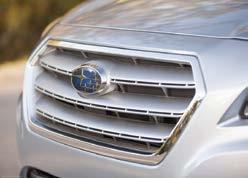
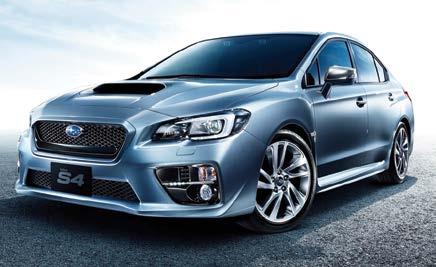









This could be making something “just a little better, all the way over to integrating computerbased mechanical — fuel injection, 10-speed transmissions when they were born with two-speeds — and now you need to make the car run without antilock brakes freaking out the computer. Wiring harnesses, modern gauge clusters, digital not analog.
Ken’s Custom Auto Body in Marysville, CA, does no FBRs but often finishes jobs others have begun, mainly Cobra replicas and other muscle cars, said owner Ken Pike Pike also paints. “We paint a lot of cars,” he says. “Between 40 and 50 complete custom paint jobs a year.”
In December, the business, already a quarter century old, moved one town over, buying a vintage building — a definite plus, he said, for a custom shop — well-known in the community, and growing it by 5,000 square feet, to 17,000. The new space went largely to new painting booths — touchscreens, variable airflow and the like.
His photo spectrometer is the latest — “less than a year old, and super accurate” — a web-based program that lets him alter colors at a touch. Pike “can take a picture, match it to a formula, and alter the formula at will.”
Touch comes into play in an old-school way, as well. In training his techs, the shop has seven employees, to “learn how to make a panel straight, do block sanding, there’s no way to teach a robot or a machine how to do that; it’s all by touch and feel.”
Trying to push his one-man shop farther, Danny Knight made a video of his work, old and new, and posted it to Facebook.
his own shop in Winchester, VA, dubbing it Knight’s Kustoms. The shop’s 4,000 square feet, with plenty of painting space.
Knight is doing new technology and, proper to the task, thinking different.
While we might think of technology in an auto body shop as doing one task “higher” — vertically using tech to improve or enhance, or simply accomplish, one thing we’ve always done — Knight is pushing it horizontally: finding where auto body tech can go and what it can do in new areas entirely. He’s painted an airplane.

“There’s a lot you can learn from working on cars,” Knight said. “The welding, the painting.
Sessions for car owners have included building a hot rod. Another clearly popular one: installing airconditioning in a classic. Huge for operators: navigating social media — “a total mystery” for many body shops — and content creation. If you’re gonna do this, you gotta keep up. That applies to technology, training, lifelong learning and the cars themselves.
Ronning in Reno, for instance, is considering his next tech purchase: “a bigger laser scanner. That way you can map out a chassis and build the whole thing in CAD. Right now, we’re doing parts and pieces as we go.”
“I started in collision repair right out of high school,” he said, and wanted to get into painting. Knight put in five years of apprenticeship —“waiting patiently to move up” —but never got the nod.
So he rented a small garage and began painting motorcycles on the weekends, making better coin than at his day job, and eventually found
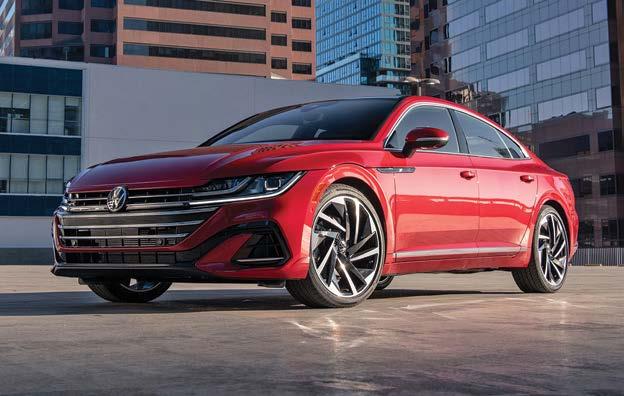
“I want to progress and learn more, new techniques, more about the business, learn about the cars,” he said. “You start to see things differently, come up with different ways” of doing things.
Marcy Yanus is a SEMA council director based in Ohio. Her work involves education programs delivered around the country on behalf of its members and to the public and body shop industry, alongside the networking and advocacy.
But as much as a shop moves forward, it can’t lose sight of present or past. “Technology goes a long way,” said Ronning, “but keeping it old school helps keeps the tradition alive. You have upgraded sheet metal, the technology and tooling is better, your tools help you, but you’re still out there doing it, molding it.”
CAD “looks super cool” but sometimes “youS take that drawing and throw it in the trash and roll with where you need to be.”
How it looks doesn’t match with what you touch, what you feel. It doesn’t — literally — fit.
“The hands are the ultimate technology,” he said.




Collision Engineering program has grown to seven schools and counts 147 graduates overall, in four years.
“Part of our mission is to change the perception of this career path,” Mahoney said, “to include higherlevel technical prowess, and personal and professional development.”
First, “it advances their career. If they want to be a manager, own a shop, or even just go into marketing.”
Second, “it enhances them as people, helps them advocate for themselves in the workforce, and see a clearer and bigger future.”
An associate’s degree adds general ed courses to the typical hands-on work regimen.
“There’s a need for apprentices to go directly into the shops,” Mahoney said. “Our focus is how can we fix this problem long-term.”
Lozano and Mahoney say on-thejob training and experience will come,
writing, math, some of the science.”
Connecting the two connects the graduate to an industry that’s only going to gain complexity.
Echoing Mahoney, Lozano noted new professional paths — “estimators, technical training, instructor jobs” — open to graduates. “These students can do that.”
Graduates learn to work with others, to listen, to think well, even just to use a computer. The approach can also “push back on the narrative that people work on cars because they’re not ‘good enough’” for other professions.
“It’s a critical developmental stage,” and a unique experience, Lozano said. “You’ve left high school, you’ve chosen to be here, you’ve chosen to learn this.”
Sometimes a plan works too well.
Three of the four May CCC graduates went to work for B&S Hacienda Auto Body in San Ramon; the fourth, Luis Quezada, went to

doors, including to a bachelor’s degree. This is not bad news.”
This is also not what Jeff Solis is doing.
Solis is one of Lozano’s apprentices, working at Walker’s Auto Body in Concord. He sought a two-year program, not to “jump right into a four-year” degree.
Automotive industry changes piqued Solis’ interest, “especially with where cars are going with EVs.” He sees long-term prospects in collision repair. “Cars are losing engines but they’re never losing body parts or panels,” he said.
Contra Costa integrating instruction with inside experience is ideal.
“In school, you learn what you’re doing and why,” Solis said. “Why body filler not something else, what this metal is and how you’d work with it. Then you’re in the shop, doing more of the same techniques as in class. You get the correct information, then you go to work.”
“The school encourages us to remain humble with the skills we learn,” Solis added, “but we know our worth in the industry and the jobs out there.”
And, he said, “I plan to stay in my shop.”
Luxe Collision in San Anselmo, CA, is “the only body shop with five stars in Marin County,” said Norberto Salas, who is also Lozano’s uncle.
Salas and co-owner Lorenzo Avila have employed two Contra Costa students for nearly a year.
Salas likes the program. “They’re not just sanding bumpers; they’re developing into mature people.”
On the shop floor, students have done everything from janitorial and detailing to actual body work. They have to know “electronics, sensors … there are a thousand computers on a car, headlights that move, it’s complex.”
The two workers get welding certification through the program and, “they’re finishing something they started, being paid, have responsibilities. There’s so many ways to learn the actual work,” and they’re going to get that.
“We’re missing the craftsmanship,” Salas said. “At the end of the day, we’re always learning.”









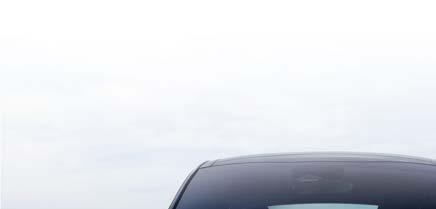





Genuine Kia Parts* are specifically manufactured from original engineering specs to ensure the same exceptional quality, performance and safety as when you first drove your Kia off the lot. Plus, they’re covered by our 12-month Replacement
Concord Kia
Concord (888) 811-3058 (925) 685-2952 Fax
M-F 8am - 5:30pm Sat 9am - 1pm
Hayward Kia
Hayward (510) 999-8432
M- F 8am-5pm Sat 9am-4pm slparts@carnamic.com
Rosesville Kia
Roseville (916) 783-8129 (916) 783-1005 Fax
M- F 7am-6pm Sat 8am-4pm parts@rosevillekia.com www.rosevillekia.com
AllStar Kia
San Bernardino (909) 763-4755 (909) 763-4744 Fax
M-F 8am - 6pm Sat 8am - 2pm parts@allstarkia.net www.allstarkia.net
Car Pros Kia Glendale
Glendale (818) 745-1103 (818) 244-0017 Fax
M-F 7am - 6pm duncan@carpros.com


Car Pros Kia
Huntington Beach
Huntington Beach (714) 274-6178 (714) 847-4410 Fax
M-F 7am - 6pm Sat 8am - 4pm jasonr@carpros.com
Citrus Kia
Ontario (800) 583-7042 (909) 390-0948 (909) 390-0982 Fax scunningham@citrusmotors.com www.citrusmotors.com
M-Sat 7am - 6pm Free Local Delivery Ask for Ike, Jimbo, Chris, Juan, Sean, Jeff Se Habla Español
Covina Kia
Covina (626) 736-4291 (626) 736-4294 Fax
M-F 7am - 8pm Sat 7am - 5pm parts@covinakia.com
Kearny Mesa Kia
San Diego (800) 635-6669 (858) 560-5033 (858) 560-9648 Fax
Largest wholesaler in San Diego with 17 delivery trucks
Kia of Alhambra Alhambra (626) 289-7803 (626) 289-8807 Fax kip@kiaofalhambra.com
Kia of Carson Carson (310) 221-9101 (310) 507-8595 Fax
M-Sat 7am - 7pm Sun 8am - 5pm www.KiaofCarson.com
Kia of Downtown LA
Los Angeles (213) 342-0923 (213) 342-0980 Fax M-F 7am - 7pm www.kiaofdtla.com
Kia of Irvine Irvine (855) 847-3592 (949) 777-2342 Fax
North County Kia
Escondido (760) 945-9939 (866) 888-3074 Fax parts@autogrp.com www.northcountykia.com M-F 7am - 6pm In San Diego Over 10 Years
Valley Hi Kia Victorville (888) 264-6075 M-F 7am - 6pm Sat 7am - 4pm smeyer@valleyhi.com www.valleyhikia.com
Jim Marsh Kia Las Vegas (877) 274-3820 (702) 946-6084 Fax M-F 8am - 6pm Sat 8am - 2pm johnd@jimmarshauto.com
Towbin Kia
Henderson (702) 868-1234 (702) 567-0037 Fax M-F 7am - 6pm Sat 7am - 4pm jmoore@towbinkia.com www.tkwholesale.com
Car Pros Kia Renton Renton (425) 204-6635 (425) 793-3889 Fax M-F 7am - 6pm Sat 8am - 5pm jgaeir@carpros.com
Lee Johnson Kia Kirkland (425) 823-0188 (425) 284-1790 Fax M-F 7am - 5:30pm Sat 7am - 5pm tthompson@leejohnson.com
By Abby Andrews Autobody News
Domenic Ieraci is the president of Simplicity Car Care, a Canadian franchisor of collision repair centers with more than 100 locations. He joined The Collision Vision podcast, driven by Autobody News and hosted by Cole Strandberg, to talk about franchising and why it might be a great fit for the right operator, as well growth, scalability and culture.
After Ieraci’s family immigrated from Italy, his father and uncle owned two body shops. As the industry shifted toward consolidation, Ieraci’s family had to figure out how to stay relevant -- either by growing and acquiring more locations, or joining a larger franchise — or they would have to sell the business.
Ieraci and his cousins, twin brothers Paul and Domenic Prochilo, came up with a production system that allowed their family’s shops to fix vehicles 35% faster than the average collision center in North America. In 2017, the trio branded that system as Simplicity Car Care. Paul and Domenic Prochilo are CEO and COO, respectively.
“From there, we ended up expanding the franchise throughout Canada,” Ieraci said.
Simplicity Car Care now has 102 locations, coast to coast, about 5% of the Canadian market share, and is the sixth-largest collision network in the country. Of its locations, 99 are franchised and three are corporately owned.
“Ultimately, we’re a vehicle to
worked super hard, but don’t really find the way to get out of the day-today grind.”
Simplicity Car Care helps independent owners enjoy the fruits of their labor, Ieraci said — that was what he and his cousins were able to do for their fathers when they developed the business model.
“I think what’s made us so unique and so different is that we’re giving

help people fulfill their personal and professional goals,” he said. “If you take a look at a lot of the independents, some of the most passionate people in the world
people the opportunity to do more than just run their business,” Ieraci said. “We’re giving them an opportunity to be able to live a life that they only dreamed of, by

allowing that business to give them their time back.”
To grow from two to 100+ locations in seven years, Ieraci and his cousins spent a lot of time on the road selling franchises. They also put a lot of time into finding the right leaders to bring into the company.
“People are extremely important,” Ieraci said. “Finding those first 15 hires were so critical, and then from there really investing in governance and technology, improving the system, improving the value proposition to the marketplace.”
The Simplicity Car Care Model Ieraci said originally, he and his cousins thought they would grow the business through acquisitions, but they turned to franchising instead, as it allowed them to scale quicker. However, that required strong fundamentals and a compelling reason to get owners to join.
“I think one of the main reasons why people join is because we understood from the beginning the pains and the struggles that an independent collision center has day to day,” Ieraci said. “Our franchise business has been created around creating a solution to help those independents accelerate.”
The Simplicity Car Care model


helps franchisees repair cars faster while reducing costs.
“If you’re an independent, it’s very difficult to gain leverage as one store, but with 100-plus unified in a back office, we can really leverage that scale, that efficiency, to start to really pull out costs and create greater efficiency at the collision center level,” Ieraci said.
After that, Simplicity helps drive results to reach each franchisee’s individual goals, “but what is true across franchisees is that they want to be profitable,” Ieraci said.
Ieraci said joining a franchise can give owners the support they need to improve their shop. It can also make it easier to sell; often, another franchisee within the system who wants to own multiple locations will buy it.
“You’re creating the best insurance policy for your business and for your wealth creation by joining a franchise,” Ieraci said. “Being an independent is extremely tough in 2024.”
For a franchisor, growth starts with understanding the needs of the marketplace, knowing the challenges potential customers are facing and delivering a new solution.
benefits. It’s not about this widget, that widget,” Ieraci said. “It’s really about what are you doing to help make someone’s life easier, make someone’s life better, whether it be the franchisee, whether it be the consumer, whether it be the insurer. We’re in the business of really solving problems.”
Ieraci said Simplicity Car Care only grows by bringing on existing independent shops and converting them to its model. It does not build any green- or brownfield locations.
Franchisees must undergo a rigorous selection process. Simplicity looks for owners’ willingness to learn and to accept change.
Potential franchisees must answer a series of questions, which are then scored to determine how willing they are to follow the system and make the necessary changes to be successful in it.
When a new franchisee joins, they go through a 90- to 120-day onboarding process, to ensure they’ve learned and adapted to the system. Then they are introduced to Simplicity’s insurance partners.
system,” Ieraci said.
But the core of the business model is consistency, he said. That controls expected outcomes and allows the entire network to quickly adapt to changes in the industry.
Simplicity Car Care has five core values, which it consistently communicates to franchisees and staff.
“Within each of our monthly team meetings, we have every department share what they did that exemplifies one or more of our core values,” Ieraci said. “Keeping that at the forefront allows us to consistently embrace those values. And that’s helped really shape the culture of the company.”
Ieraci said he thinks “the next five to 10 years are going to be extremely exciting,” as changes in consumer trends and behaviors will require repairers to adapt by investing in infrastructure to deliver a seamless, frictionless claims experience.
“How are we leveraging technology so that we’re not being left behind?” Ieraci said.
Claudia Scali-Ieraci, founded the Children on the Rise Foundation in support of the SickKids Foundation, with the goal of raising $1 million by 2025 for the expansion of a large children’s hospital in Toronto.
Ieraci said his son Leo, born in 2019, became a patient at the hospital the same night the Children on the Rise Foundation held its annual gala to raise money for it. Today, Leo is about to turn 5 and is doing well, Ieraci said.
“It’s really about your family, about enjoying your life. When you have these experiences that take you out of the day to day, and it’s a real situation, it really puts life into perspective,” he said.
“It’s not about features and



Simplicity has standards for how franchisees should run certain departments of the shop, but it also gives them flexibility to “use their own personality and their own flavor and their own style as well within the
Ieraci said his company is doubling down on its investment in its people as well, “because you can only grow as well and as great as your people are.”
In 2017, Ieraci and his wife,


Know and understand your numbers. What are the key metrics that are important to your business? Plan for your future. Know what you want from your business. If you know that, there’s a higher probability you’ll be able to get it. Be willing to change. Get comfortable being uncomfortable. Because when you get out of your comfort zone, that’s when the magic happens. If you stay in the comfort zone, you cannot possibly change. And if you’re not changing, it’s very difficult to evolve.
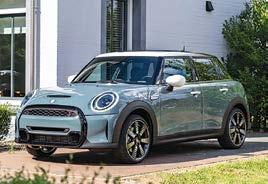
BMW of San Diego
San Diego
858-223-5060
858-277-7928 Fax M-F 7am-6pm Sat 9am-2:30pm jwood@penskeautomotive.com
Century West BMW North Hollywood
818-432-5819
5596 N. Blackstone Ave. 800-462-2231
559-436-6041
559-436-0743 Fax Mon-Fri 7am - 6pm; Sat 8am - 4pm etaylor@lithia.com
818-769-1520 Fax
M-F 8am-6pm Sat 8am-5pm eperez@centurywestbmw.com
626-576-2867
626-457-2027 Fax M-F 7am-7pm Sat 8am-5pm jason.rodriguez@ncbmw.com www.ncbmw.com
818-452-1219
818-508-5082 Fax M-F 8am-5pm Sat 8am-5pm allanv@miniuniversalcity.com
and represents more than a dozen franchises. BMW of Humboldt Bay is the only location offering BMW, making for a terrific addition to the portfolio. Based on new vehicle retail sales, Victory Automotive Group is among the top 15 dealership groups nationwide according to Automotive News. Founder and President Jeffrey Cappo works alongside his sons, Eric and Michael Cappo, who are heavily involved in the day-to-day operations. Lankarani owned and operated BMW of Humboldt Bay since 2006.
Covina Volkswagen in Covina, CA, was sold by SRO Group and Greg Bozzani to Alin Navidi. It will be renamed Covina Valley Volkswagen and will remain at 528 S. Citrus Ave. in Covina.
Covina Volkswagen is an awardwinning Volkswagen dealership in Los Angeles, established in 1911. Greg Bozzani, partner and general manager of Covina Volkswagen, is the third generation of a storied automotive legacy that began more than 100 years ago. His family’s journey began in the early 1900s with his grandfathers, Joe and Amerigo

Bozzani, who traveled from Italy to America under the commission of Fiat. Despite a dramatic train robbery and a detour to Los Angeles, the brothers established themselves in the burgeoning automotive market.
The Bozzani family’s resilience was tested during the Great Depression, but they persevered, becoming deeply embedded in both the automotive industry and the local community. Their legacy includes Amerigo’s role in the development of one of the first freeways in Southern California, the Pasadena Freeway, connecting Pasadena with the center of business and commerce in downtown Los Angeles.
In the 1960s, Greg’s father, Bob Bozzani, continued the family tradition in the retail automotive business, and secured his first Volkswagen dealership. Greg entered the family business in 1984, learning the trade from his father.
After his father retired, Greg worked at various other dealerships before securing Covina Volkswagen. Greg has upheld his family’s century-long reputation for excellence, grounded in a legacy of integrity and service.
SRO Group also owns Volkswagen of Ontario and Volvo of Ontario in California.
New owner Navidi started his automotive career as a used car



dealer in Portland, OR. He then became a partner at Coachella Valley Volkswagen, a Palm Springs dealership. When it came time to sell Coachella Valley Volkswagen, Performance Brokerage Services was engaged to handle the transaction.
Following that sale, Navidi worked with Performance Brokerage Services to identify and secure the ideal dealership opportunity where he would have full ownership.
Nissan of Tustin in Tustin, CA, was sold by Tim Hutcherson to David Massoudi of Mass Auto Group. It will also retain its name and location at 30 Auto Center Drive.
Nissan of Tustin is a proud recipient of the Nissan Award of Excellence, which recognizes employees and dealerships who consistently deliver outstanding results in sales, customer satisfaction and owner loyalty. This commitment to excellence is exemplified by Hutcherson, who was one of a select group of 48 dealers from across the country nominated for the highly coveted TIME Dealer of the Year award in 2023.
Mass Auto Group operates five dealership locations across Southern California representing Nissan, Chrysler, Dodge, Jeep and RAM.
printing solutions, paving the way for broader market adoption.
Auto Additive plans to lead the educational and training aspects of 3D printing, working with bodies such as I-CAR, to ensure the collision industry is well-versed in the capabilities and limitations.
3D Printing Opportunities for the Collision Industry
Sears said 3D printing offers massive potential to the collision industry for producing replacement or repair parts.
“It allows for the creation of custom tools and jigs tailored to specific repair tasks, improving efficiency and accuracy in the repair process and reducing labor time and costs,” he explained. “The ability to print parts on demand, especially if they are out of stock or discontinued, can significantly reduce downtime for repairs.”
He said this is particularly useful for older or rare vehicle models where parts may not be readily available. In addition, 3D printing can facilitate rapid prototyping and testing of new repair methods and tools, allowing for faster innovation and improvement in repair techniques.











American Chevrolet MODESTO
209-491-7810
209-575-2564 Fax
M-F 7:30 am - 5:30 pm Sat 9 am - 2 pm gmparts@americanchevrolet.com www.americanchevrolet.com
Blackstone Chevrolet Wholesale Parts FRESNO
559-438-5875
559-438-4345 Fax
M-F 7:30am – 5:30pm Sat 8am – 4:30pm bharman@blackstonegm.com
Chase Chevrolet STOCKTON
209-475-6620
209-475-6708 Fax
M-F 7am - 5pm Sat 7:30am-4:30pm cesar@chasechevrolet.com
Dublin Chevrolet Cadillac Buick GMC DUBLIN
925-828-8251
925-829-2941 Fax
M-F 7am - 6pm dublinchevyparts@cacargroup.com www.dublinchevrolet.com
FH Dailey GM Parts Center
SAN LEANDRO
800-4A-GMPART
510-351-0534
M-F 8 am - 5 pm Sat 8 am - 4 pm parts@fhdailey.com www.fhdailey.com
Michael Stead Cadillac
WALNUT CREEK
925-934-5022
925-934-0336 Fax
M-F 8 am - 5 pm Sat 8 am - 3 pm steadparts@gmail.com
Courtesy Chevrolet SAN DIEGO
800-336-1404
619-297-4023 Fax
M-F 7am - 6pm Sat 8am - 5pm www.courtesysandiego.com
Paradise Chevrolet VENTURA
888-5-CHEVY-5 (888-524-3895)
805-642-0134
805-644-7214 Fax
M-F 7:30am - 6pm Sat 8am - 3pm


626-795-6872 Fax M-F 7:30am - 6pm Sat 8:30am - 2pm parts@thorsonmotorcenter.com
406-896-3111
406-896-3924 Fax M-F 7 am - 6 pm tsoltis@dennymenholt.com
Corwin Buick GMC RENO
775-333-8777
775-322-1837 Fax

M-F 8am - 5:30pm ahardie@corwinauto.com www.corwinbuickgmc.com
Michael Hohl Motor Company CARSON CITY
775-884-8619
775-884-8645 Fax
M-F 7 am - 6 pm Sat 8 am - 5 pm gmparts@michaelhohl.com
Camp Chevrolet
SPOKANE
509-456-7860
509-458-3792 Fax
M-F 7:30am - 5pm zacharydeason@lithia.com www.campchevrolet.com Nevada

By Paul Hughes Autobody News
The dust is clearing a bit for auto body shops affected by the CDK Global cyberattack in mid-June, when hackers breached CDK’s online defenses, gaining access to its auto dealership client list and all its data, and demanded a cash bounty. Media reports said CDK paid $25 million to hackers based overseas.
It took several weeks for the auto dealership software provider to come back online. From June 19 through July 5, at least some dealers were offline, including their parts departments, which sell wholesale OEM parts to local independent shops. The July 4th holiday, the busiest holiday of the year for collision centers, came and went.
Then the piles of pen-and-paper purchase orders could begin to be entered into electronic form.
Beau Bennett, owner of Kious Kountry Auto Collision Center Inc. in Waukon, IA, a body shop operator Autobody News spoke with in the days following the ransomware breach at CDK, is exercising patience. Some suppliers he works with
weren’t affected; others have “talked to people up the food chain, working [at the dealership level] to ensure this doesn’t happen again.” If it does, he says, “it’s going to be worse.”
Bennett’s been open 30 years, and he’s “very loyal to all my suppliers. A sales rep was here yesterday and said, ‘Your statements are coming, so be diligent’” in checking their accuracy.
Sticker Shock
Anderson Economic Group estimates dealerships’ losses at $1.02 billion,

including new and used car sales, finance and insurance, and parts and




service. It doesn’t tally buyer losses, dealer body shops or new costs for training, IT audits or cybersecurity, AEG Chief Executive Patrick Anderson told Autobody News.
Anderson said customer costs aren’t included because “it’s hard to put a dollar amount” on

inconvenience. Some buyers simply went to other, unaffected dealers and bought cars anyway, or, as others have noted, returned to the same
provide values for specific elements of the total.
Pound of Prevention
Brad Miller is head of legal and regulatory affairs at ComplyAuto in Salt Lake City, UT. He spent 16 years with the National Automobile Dealers Association (NADA), most recently as chief regulatory counsel.
ComplyAuto sells compliance software and services to auto dealers and body shops, including cybersecurity and customer privacy rights tools, OSHA/safety compliance and materials focused on the high-reg California market.
Breaches like CDK’s expose information, credit card data, social security numbers — “anything personally identifiable,” Miller said.
“It’s scary how organized [hackers] have become,” he said. “Some of them have numbers that targets can call to make payments,” like any business. And it doesn’t cost them more to attack smaller entities — which they’re

thousands of clients, “We work with a lot of small businesses.”
As body shops look to buffer and buttress their operations — servers, websites, email, phone systems — IT companies like ComplyAuto are looking to help. Miller’s work is national, and the company is large, but its entry-level offerings run about $250 a month. Regional IT providers are also out there such as, for instance, Micro Tech Resources and Eyonic Systems Inc. in Pleasanton and Vacaville, CA, respectively.
Security used to be peripheral to operations, Miller noted, and everything was at the dealership or body shop. “Now it’s its own system, and not just peripheral; everything else is peripheral to it,” and it’s all on the cloud
This means it’s more complex and potentially less safe because outsiders have access to data that’s outside the shop. Cybersecurity “is becoming a core competency” and here’s a wrinkle for body shops: connectivity in cars. “There’s data in the vehicle, too.”
“If you’re connected to the internet, you’re exposed. If you’re exposed, you could be liable,” Miller said.
Storm Warnings
Individual shops are on the hunt for what to do next. Robert Molina’s Collision Care Xpress near Fort Lauderdale, FL, said CDK helped “everyone see how important parts
are, the whole dynamic of parts and procurement; they brought everybody to a standstill.”
Well, not everybody.
His shop — 100,000 square feet, 60 workers, repairing 200 to 300 cars a month — was largely unaffected, in part by the very counsel he offers to the industry: buying direct.
Molina’s work focuses on Tesla, Rivian and Lucid, so that’s where he gets his parts. He also buys direct from BMW and Porsche.
Mass-market nameplates at his shop, “the Fords, Chevys, Toyota … definitely got hurt,” he said, “and we’re asking our vendors, do they have a Plan B, a Plan C” for preventing a future disruption.
They do. “They’re setting up direct invoicing with manufacturers,” opening new buying portals, bypassing the single-provider model.
John Melendez in Thornton, IL, muscled through the CDK breach in June. He said shops can do something about an event like this one.
1. Copy customers on all job correspondence. “All estimates, photos and communication,” Melendez said. If it goes to the insurance company or the supplier, it goes to the owner. “If you always copy them, you can reacquire the information” if it’s lost or threatened.
2. Open a single-user account with the estimating provider, so the body




shop isn’t crippled by a breach. “Not disrespecting the vendor, but don’t let it affect your business,” Melendez said. The “single user” move echoes Molina’s advice: buy direct and develop multiple, independent routes to the same destination.
3. “Worst case, hire an outside source, pass the cost to the insurance company or the consumer,” Melendez said. “Go back to the fax machine,” if needed. “Always move forward.”
Do whatever it takes, whatever that means, whatever third party you need, to keep the parts flowing and the work going. That’s the point of the plan, Melendez said: Never stop.
Melendez’s 13,000-square-foot shop has 12 employees, certifications, no DRPs and a strong customer base. It does not have cyber-insurance.
“The cost of doing business continues to go up,” he said, “and I have to ask, ‘Am I going to be able to recoup that?’ and the answer is no.”
Meanwhile, Molina encourages cyber-insurance, which he has. Even though a typical policy “only kicks in after 30 days” of disruption, it’s worth it, on the same principle for carrying other kinds of insurance.
“Cyber-hacking is real and could at the very least damage your reputation,” he wrote to Autobody News in an
email. “Worst case, you close your doors for good, if the financial impact lasts several months.”
In general, body shop operators say cyber-insurance policies are growing in the industry in an organic, common way: by being required. Manufacturers offering OEM certification are adding cyber-insurance to the cert process.
Couple that with insurers requiring Melendez’s and Molina’s multiple buying routes, and some necessary changes will come by stipulation: you want OEM, get insurance; you want insurance, buy direct.
Consultants and operators alike brag on the benefits of finding the best ways to do what’s needed: strengthen internal protection and prevent the one-way-in model of a single provider.
“If your car has a dent, you take it to a professional,” said California IT consultant Roberto Baires of Micro Tech Resources. And do so in advance. “You don’t want to start shopping around after a problem.”
Miller’s to-do list includes blocking spam, multifactor authentication and encryption; continuously monitoring electronic activity; knowing and being able to disclose data you’re collecting; reliable cybersecurity vendors; and system redundancies in case something fails.
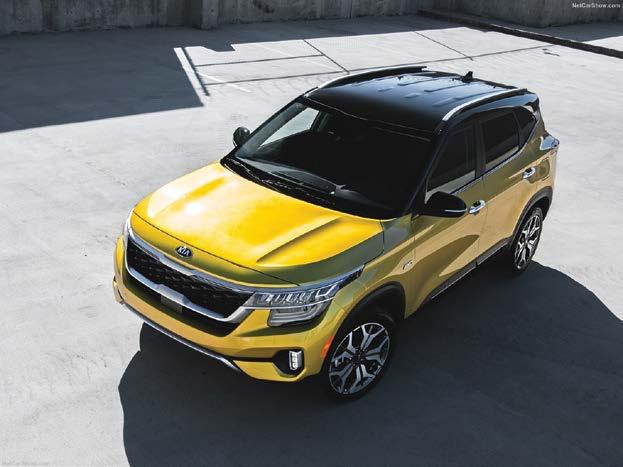




By Paul Hughes Autobody News
In June, a cyberattack on software maker CDK Global shut down 15,000 automobile dealerships, affecting parts buying by thousands of body shops.
As of last year, two Northern California body shops were already prepared. Accurate Auto Body and Integrity Auto Collision Center separately revamped their operating systems — and their overall approach to cybersecurity — to protect themselves from an event like the one that hit CDK.
mine” keeping the system clean, monitoring email for spam and danger — “only the legitimate stuff gets to their inbox” —and, via EDR, “constantly monitoring the patterns on a device” for suspicious material and movement.
Also part of the plan: charting web traffic, blocking bad domains and running back-ups — generally hourly, and, with weekends, never more than a day.
Backups also help, he said, with more concrete issues: If there’s a hardware failure or a fire, the files are safe.

The server at Oscar Moreno’s Integrity Auto Collision Center in Fairfield, CA, was due for replacement two years ago.
Chris Taylor of Eyonic Systems Inc. in Vacaville, CA, did the work.
we don’t do it ourselves.”
Moreno wants more body shops to talk with their insurance brokers. He’s got at least one convert.
He and Silva both serve on the executive board of the California Autobody Association — Silva is also a past president — and Silva said she’s now going to look at cyberinsurance.
“It had never occurred to me,”
100%,” cybersecurity work the duo did at their respective shops didn’t directly shield them from the CDK Global breach.
Auto body shops were downstream collateral damage from the ransomware attack that directly hit auto dealers. Disruptions commonly involved parts ordering.
“The security didn’t come into play for CDK,” said Silva. During the disruption, her shop was generally able to get parts, “but with no documentation” on pricing.

The internal moves can, however, protect them from direct hacks, and the daily stream of phishing, spam and worse — everything from the annoying to the assaults.
Both have completely rebuilt their respective shops’ entire superstructure within the last two years, with two different IT consultants.
Tiffany Silva co-owns Ac curate Auto Body in Richmond, CA, with husband Daniel Silva and her father, Edward Cichon . The 27,000-square-foot shop has 30 employees and turned 40 this year. Amid consolidation, Silva said it’s “one of the very few family-owned and operated in our area,” the East Bay area of San Francisco.
A year ago, “ Roberto [Baires] came in and completely restructured our server, our whole operating system, firewalls were put in place,” Silva said. “Before I was not confident, and our server was due for replacement anyway.
“At the time, and really it still is, annoying to do all the passwords,” she said. But it’s worth it.
Baires did the work. His Micro Tech Resources IT consultancy in Pleasanton, CA, has some 100 body shop clients in the Bay Area and Sacramento.
“We manage the entire IT infrastructure,” he said, “the server, the network, telephone, website — and most important, the security, including every single device in the network.”
Baires described security work as “the canary in the coal
“He came in, looked at the system we had, and in the course of building the new server we also got more gatekeeping,” Moreno said. What CDK Global experienced, Moreno believes, can come down to the level of individual shops — certainly of franchised systems.
“It’s just a matter of time for hackers to aim at smaller shops,” he said. “If they’re able to go after big corporations, to get in, [demand] ransomware — they can do the same thing against smaller companies.”
Moreno’s shop is 12,000 square feet with 16 workers; it opened in 2011.
“Yes, we have IT, we’ve done part of what needs to be done to prevent hacking. But I don’t think there’s a 100% way to block it.”
The next reasonable step for Moreno, then, was cybersecurity insurance. Do everything that can be done first; add the remedial element to cover what comes.
“A year ago, we’re renewing our insurance, and we bought a policy that includes hacking coverage,” he says. “The chances are slim but it could happen, so for X amount of money, let’s throw it in.”
The policy kicks in after three days of disruption — this period can vary, by an owner’s choice, body shop operators say — and covers up to $1 million in losses.
“We deal with insurance companies day in, day out,” he said. “We tell our customers to do this” — be diligent and smart about insurance —“but
she says, “so that started a whole new conversation, to see what I’m covered for. It’s something I need to look into.”
As an example of the “nothing is
The aim is prevention, Baires said, and a more general — and still crucial — “business continuity [to] have customers ready” to respond, to go back to the most recent clean back-up, to be upand-running again as quickly as possible. Nothing is fail-safe but literally nothing is just that: nothing.
“Real life is not if but when it happens,” Baires said.


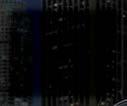



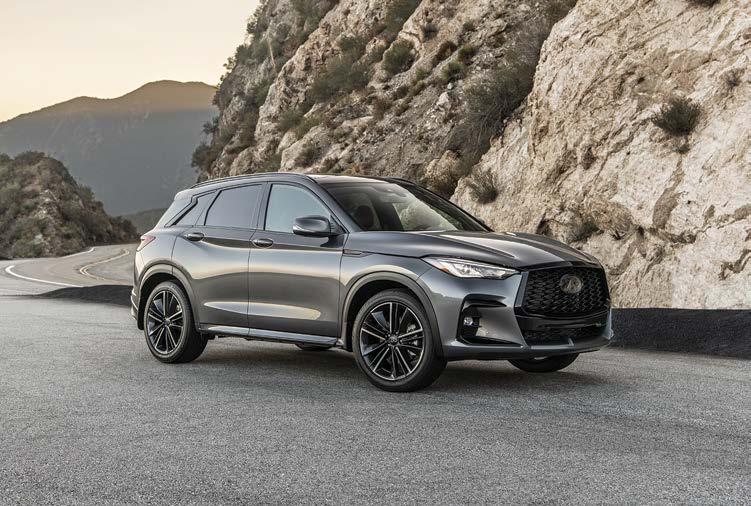
DOWNEY NISSAN
Downey
562-334-1188 (562) 334-1195 Fax M-F 7-5 wholesaleparts@downeynissan com
MOSSY NISSAN
ESCONDIDO
Escondido 888-292-0402 (760) 746-4300 (760) 739-5794 Fax
M-F 7:30-5 RonH2@mossy�com jlevitt@mossy com
NISSAN OF BAKERSFIELD
Bakersfield 888-402-6915 (661) 835-0389 Fax M-F 7-6, Sat. 8-5 www nissanofbakersfield com
NISSAN OF VAN NUYS
Van Nuys
818-374-4421 (818) 787-8400 (818) 908-9520 Fax
M-F 7-6:30, Sat. 7-6 wholesaleparts@vannuysnissan com www nissanofvannuysparts com
TEMECULA NISSAN
Temecula 951-972-8430 (951) 972-8396 Fax
M-F 7-6, Sat. 7-6, Sun. 8-5 wholesaleparts@temeculanissan�com
Van Nuys
818-374-4493 (818) 787-8400 (818) 809-2727 Fax
M-Sat. 8-5
wholesaleparts@vannuysinfiniti com www infinitiofvannuys com
FUTURE NISSAN
Roseville 916-677-5251 (916) 786-0743 Fax
M-Sat. 7:30-6 wholesale@futurenissan com Parts FutureNissan com
LITHIA NISSAN OF FRESNO
Fresno 559-436-6040 800-870-7779
M-F 7:30-5:30 Sat 8am-4pm ETaylor@lithia�com
MOSSY INFINITI OF ESCONDIDO
Escondido 888-292-0402 (760) 746-4300 (760) 739-5794 Fax
M-F 7:30-5
RonH2@mossy com jlevitt@mossy com
NISSAN OF VACAVILLE
Vacaville
707-455-4527
M-F 7-6, Sat. 7-5 wholesale@vacavillenissan com
By John Yoswick Autobody News
Representatives of three trade organizations representing repairers and automakers at the Collision Industry Conference (CIC) in July shared why they’re not supporting federal right to repair legislation under consideration by Congress, and suggested they might seek to introduce an alternative version.
The Right to Equitable and Professional Auto Industry Repair (REPAIR) Act (HR 906) is described by proponents as “right to repair” legislation, in that it would prohibit vehicle manufacturers from impeding a vehicle owner’s access to their vehicle’s data related to diagnostics and repair. But it also would also prohibit automakers from impairing a non-OEM parts manufacturer from producing or selling compatible aftermarket parts.
Speaking during a Governmental Committee presentation at CIC, Aaron Schulenburg, executive director of the Society of Collision Repair Specialists (SCRS), said he thinks it’s the parts aspect that is the real focus of the backers of the
legislation, which he called “very difficult to support from the lens of an independent repairer.”
The REPAIR Act is being promoted not by the largest mechanical and collision repair shop trade associations but by the Consumer Access to Repair (CAR) Coalition, which consists of insurance companies, CAPA, LKQ Corporation and other manufacturers and distributors of non-OEM parts.
“What you have is a lot of groups who don’t necessarily represent collision repair businesses, saying they are speaking for collision repair businesses, representing a viewpoint






that doesn’t match what [our members] are experiencing in their business,” Schulenburg said.
SCRS and the Automotive Service Association (ASA) have made voluntary agreements with the Alliance for Automotive Innovation, which represents automakers, that they say ensures independent shops have access to the same OEM tools and information that automakers make available to their dealerships.
ASA lobbyist Bob Redding said the three groups are working to educate members of Congress about the voluntary agreement and show them it’s working.
Wayne Weikel of the Alliance for Automotive Innovation said it’s challenging to distinguish being supportive of the “right to repair” and of making information available to independent shops — but not the REPAIR Act itself.
“Automakers should have our own bill instead of trying to just play defense and trying to fix something that’s probably unfixable,” Weikel said. “We should have our own federal bill
Redding said the August Congressional break and this fall’s election means the window for the REPAIR Act to move forward is rapidly closing.
“Moving anything controversial, where not everybody’s on the same team in a very divided Congress, is going to be hard,” Redding said. “If it doesn’t go all the way to the president’s desk soon, it will have to be reintroduced in the next Congress in 2025.”
“I think if there’s going to be a focus on access to [automaker] information, there should be an equal focus on utilization of the information.”
AARON SCHULENBURG SCRS
It was clear at the meeting that many in the industry aren’t wellinformed about the legislation. Prior to the committee’s presentation, a
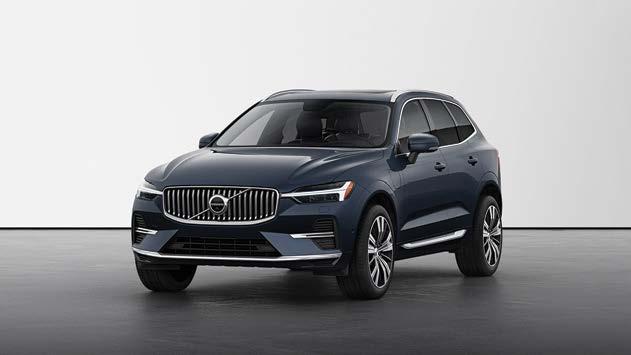

to have an informed opinion about it.”
That appeared to have changed following the committee’s presentation.
“The social media ads that I’m seeing regularly, ‘It’s your car, your right, contact Congress now,’ that’s not you guys, that’s not our industry?
You’re kidding me,” Washington state shop owner Jeff Butler said following the committee’s presentation. “So this social media campaign that says ‘support your local auto shop’ is not our industry supporting local auto shops.”
Weikel said he understands the confusion about the legislation.
“We spend a lot of time on [Capitol] Hill going in and explaining [to members of Congress], ‘I understand this has been presented as the right to repair, but they don’t actually represent repairers,’” Weikel said. “‘Here’s what actual repairers say, and here’s what automakers provide [to the independent repair industry]. And yes, that’s completely counter to what you have been told on the REPAIR Act.’
“So this is why we’ve spent so much time working together [with ASA and SCRS] because the REPAIR Act has been framed very well,” Weikel continued. “People who do my job for the other side on this issue do it very well, presenting this as being about the ability to complete a repair, but
when you actually read the bill, that’s not what’s in the bill.”
“They don’t understand all the dynamics of the various industry sectors,” Redding agreed about members of Congress.
Schulenburg said he’s not hearing from shops being unable to access automaker procedures, only from shops getting pushback from insurers related to following and being paid for those procedures. It’s those dynamics that Schulenburg think should be addressed in any “right to repair” legislation.
“I think if there’s going to be a focus on access to [automaker] information, there should be an equal focus on utilization of the information,” Schulenburg said. “I think there’s a lot of focus right now on safer roadways, safer vehicles. There’s a lot of push by people in both the insurance industry and the regulatory worlds to add technology to vehicles to make them safer. And then the same people who push for that often create obstacles in the claims settlement.
“So if we think safer roadways are important, if we think safer vehicles are important, then safer repairs should also be prioritized in that as well, and not be left out as part of the equation,” Schulenburg said. “So I think for us, for our organization, that’s certainly something that’s a priority.”

Galpin Volkswagen North Hills
888 840-8416
Fax: 818-778-2090 www.galpin.com
Volkswagen Pasadena Pasadena
626-577-0300
866-654-8591
Fax: 626-568-0387
M-F 7:30am-6pm; Sat 8am-6pm
Hyundai issued a recall for almost 50,000 of its 2024 Santa Fe and Santa Fe Hybrid SUVs due to concerns that the airbags may not deploy during crashes or, conversely, may deploy unexpectedly without any impact.

The recall, which affects vehicles in both South Korea and North America, stems from a problem with the main floor wiring harnesses.
The issue was first flagged in April 2024 when a rear-seat side airbag in a Santa Fe SUV deployed without cause in South Korea. Following the incident, Hyundai initiated an investigation and discovered the wiring harnesses could chafe against
the passenger-side second-row bench seat assemblies, leading to potential damage.
This damage has already led to eight incidents, though no crashes or injuries have been reported.
Affected Santa Fe drivers should monitor their vehicles for illuminated airbag warning lights, which could indicate a malfunction.
“As a precaution, if any of the warning symptoms specified in this report are confirmed present in the vehicle, owners are advised to visit a dealer immediately for diagnosis and repair as the recall remedy is currently available,” Hyundai said.
Owners will receive recall letters starting Sept. 23. Hyundai dealerships will either secure the floor wire harness or replace any damaged harnesses to resolve the issue.
For further information, Santa Fe owners can contact Hyundai at 855-371-9460 and inquire about recall number 265.

Niello Volkswagen Sacramento 916-482-5790
Fax: 916-481-9579 Mon-Sat 8am-5pm vw.parts@niello.com
WASHINGTON University Volkswagen Seattle 206-634-8200
Fax: 206-547-1581 M-F 7am-6pm parts@uvwaudi.com www.universityvw.com


San Diego 5202 Kearny Mesa Road San Diego, CA 92111
858-650-4411
858-380-2811 Fax M-F 7am-6pm Sat 8am-1pm jnavarro@penskeautomotive.com aramirez@penskeautomotive.com website: www.miniofsandiego.com
• Extensive Inventory Updated

Production at General Motors’ Wentzville Assembly Plant in Missouri came to a halt July 22 due to a strike at a nearby seat supplier. A day later, GM announced it pushed back the reopening of its Orion Township EV factory in Michigan to mid-2026, citing slower-thananticipated growth in EV demand.
GM, which employs about 4,600 people at the Wentzville plant, faced parts shortages after unionrepresented workers at Lear Corporation’s seating assembly plant in Wentzville went on strike late July 21. The GM plant produces midsize pickups and cargo vans and is one of GM’s key facilities.
“We can confirm that GM Wentzville Assembly Plant was impacted by part shortages resulting from a labor dispute at one of our suppliers. We hope both sides work quickly to resolve their issues so we can resume our regular production schedule to support our customers,”
GM spokesman Kevin Kelly told the Detroit Free Press. Lear Corporation, which employs about 500 union-
represented workers at its Wentzville plant, had been negotiating a new collective bargaining agreement with the United Auto Workers (UAW). Despite progress in these negotiations, the union decided to strike, as confirmed in a statement from Lear sent to the Free Press.
“We have negotiated in good faith with the UAW for some time to reach a new collective bargaining agreement for our Wentzville, Missouri, seating assembly plant,” Lear said in the statement. “Despite progress in the negotiations, the union informed us late last night of their decision to strike. Lear Corporation stands firm in supporting our employees and the communities in which we operate.”
The UAW criticized Lear’s approach to the negotiations. Region 4 Director Brandon Campbell said in another statement, “Shame on Lear for failing to come to a fair agreement with the 500 members of UAW Local 282 who are now forced to strike for their fair share. The company has had plenty of time to make things right, but instead spent a billion dollars on stock buybacks and dividends last year. Now Wentzville Assembly is down thanks to Lear’s refusal to


bargain a fair deal.”
GM confirmed no other plants have been impacted by the strike at this time. The automaker hopes for a swift resolution to the labor dispute to resume normal production and minimize disruption for its customers.
GM announced a significant delay in the reopening of its Orion Township electric vehicle (EV) factory, now slated for mid-2026, due to slowerthan-expected growth in EV demand.
During a second-quarter earnings call July 23, GM CEO Mary Barra said, “We’ve decided to reopen Orion Assembly as a batteryelectric truck plant in mid-2026. The new timing is six months later than our plan heading into the year. We’re confident that we can meet customer demand for standout EV trucks in the interim by leveraging the production capacity and flexibility we have at Factory Zero.”
GM had initially planned to retool Orion Assembly for the Chevrolet Silverado EV pickup production this year, but the schedule has been repeatedly adjusted. This latest
delay moves the restart from late 2025 to mid-2026. In the meantime, GM’s Factory Zero in Detroit and Hamtramck will continue to produce the Chevrolet Silverado EV and GMC Hummer EV models. This decision follows GM’s earlier move to idle Orion Assembly at the end of 2023, halting the production of the previousgeneration Chevrolet Bolt and Bolt EUV. The company plans to launch an all-new Bolt using GM’s Ultium propulsion technology in 2025, to be built at Fairfax Assembly in Kansas.
The delay also impacts the workforce at Orion Assembly. A WARN notice filed by GM indicated 945 jobs would be cut starting Jan. 1, while approximately 1,000 other workers were transferred to other GM facilities in Michigan. The exact timing for when employees will return to Orion remains undetermined. Despite the slowerthan-expected EV adoption, GM is committed to managing costs and optimizing production. Barra highlighted during the earning call that GM’s joint venture, Ultium Cells LLC, is ramping up domestic battery cell supply, which will enhance the profitability of GM’s EV portfolio.








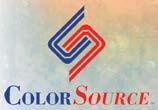











3M announced the launch of the 3M OEM Match Family, a comprehensive product line specifically designed to meet the needs of car repair technicians as well as distributors serving this customer group.
The 3M OEM Match Family includes the 3M OEM Match Epoxy Seam Sealer, available in four colors — gray, beige, black and white — as well as a set of four tip types that can produce seam sealer beads matching those of robotically applied OEM factory seams.
The range includes the 3M OEM Match Wing Tip, 3M OEM Match Ripple Tip, 3M OEM Match Wide Stream Tip, and 3M OEM Match Spray Tip (with 3M OEM Match Air Supply Kit). Each tip is engineered to deliver precise and consistent results, allowing technicians to achieve OEM-quality seam sealer beads effortlessly. All tips are designed to be attached to 1K or 2K seam sealers from 3M to bring this solution to a wide range of products.
The 3M OEM Match Family is now available through authorized 3M distributors.
A group of Toyota Mirai lessees and owners — all based in California, the only state where the hydrogen fuel cell electric vehicle (FCEV) is available — has filed a class action lawsuit against the automaker, accusing it of misleading consumers about the daily usability of the car.
The plaintiffs cite numerous issues, including a lack of operational refueling stations, skyrocketing hydrogen fuel costs, and a disappointing range that falls short of advertised figures.
The lawsuit alleges Toyota misled prospective buyers by claiming that “hydrogen fuel is available and that refueling the Mirai is seamless,” comparing it to the ease of refueling a gasoline vehicle. However, Mirai owners report frequent difficulties in finding compatible refueling stations, often requiring long drives and facing equipment malfunctions or fuel card issues that can leave them stranded. These problems, they argue, render the car practically “unusable” for everyday driving.
Additionally, the plaintiffs allege

hydrogen fuel can be unavailable for “days at a time,” with refueling often taking “many hours on average” due to hydrogen pumps freezing up and locking onto the vehicle. This lengthy downtime leaves frustrated owners waiting more than 30 minutes for the pump nozzle to warm up enough for a safe disconnection.
Further exacerbating the issue is a 200% increase in the price of hydrogen fuel over the past few years, rising from $13 per kilogram in 2022 to approximately $36 per kilogram in 2024. This surge means that Toyota’s $15,000 fuel card, provided as an incentive at purchase, won’t last “at least five years” as originally advertised.

The lawsuit also alleges the Toyota Mirai’s advertised range of 357 miles for the Limited trim and 402 miles for the XLE trim is unrealistic. Drivers consistently report falling 100 miles short of these figures, significantly limiting their travel freedom between refuels.
Moreover, the plaintiffs claim these problems have severely impacted the resale values of the Mirai, which reportedly retains only 19.4% of its value after five years of use.
The first generation of the Toyota Mirai debuted in 2015, with the current second-generation model following in 2020. Both are exclusively sold and leased in California due to the scarcity of hydrogen refueling stations elsewhere in the U.S. Earlier this year, Shell announced the closure of seven out of the 55 hydrogen stations in California due to supply issues, further complicating the lives of FCEV owners.







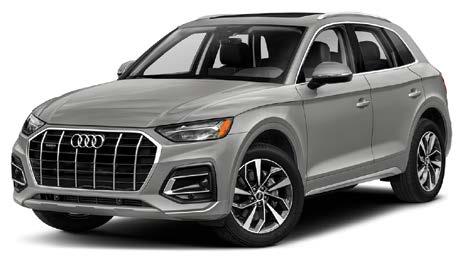




Co-President & Publisher
Nathan Gregory
Co-President & Publisher
Paul Stepanek
Editor Abby Andrews
Contributing Writers
Mike Anderson, Stacey Phillips, Cole Strandberg, John Yoswick
Advertising Sales
Joe Momber, Norman Morano, Steve Sklenar
Office & Media Manager
Kelly Cashman
Director of Digital
Bryan Malinski
Art Director
Rodolfo Garcia
Design Director
Vicki Sitarz
Accounting & HR Manager
Heather Priddy
Content Manager Randi Scholtes
Stellantis is facing major restructuring efforts as it grapples with a significant decline in profits and sales for the first half of 2024. The automaker reported a net income of $6 million, a sharp drop from the $11 million recorded in the same period last year.
Serving Alaska, California, Hawaii, Idaho, Montana, Nevada, Oregon, Washington and Wyoming. Autobody News is a monthly publication for the autobody industry. Permission to reproduce in any form the material published in Autobody News must be obtained in writing from the publisher.
©2024 Autobody News, LLC.
Autobody News P.O. Box 1516 Carlsbad, CA 92018 (800) 699-8251 (760) 603-3229 Fax www.autobodynews.com editor@autobodynews.com


CEO Carlos Tavares announced bold measures to address these challenges, including the potential elimination of underperforming brands. “If they don’t make money, we’ll shut them down. We cannot afford to have brands that do not make money,” Tavares stated firmly. Stellantis, formed from the merger of Fiat Chrysler Automobiles and PSA Group, oversees 14 brands such as Chrysler, Fiat, Maserati, Jeep and Peugeot. Despite this extensive portfolio, the company has struggled with weak margins and high inventory in the U.S., prompting Tavares to focus efforts on improving these areas.
Tavares will be working closely with the Stellantis team in the U.S. over the summer to enhance the performance of its operations and manage inventory more effectively.
During an investor meeting in June, Tavares revealed a strategy to cut costs at Stellantis by 30% to make it more competitive with Chinese automakers, expected to result in job losses at the company’s U.S. headquarters in Auburn Hills, MI. The cost-reduction plan targets operational efficiencies and cost competitiveness. “We have at least two plants that need a significant turnaround, at least two,” Tavares said at the meeting. European plant managers will be brought in to oversee the changes.
A key component is the “EV first strategy,” designed to streamline operations and focus on EV production. Then, in early July, Stellantis announced it cut a shift for at least the month at its Warren Truck Assembly Plant in Michigan, impacting about 1,600 workers, after the company recorded a 21% decline in U.S. sales in the second quarter compared to the same quarter last year. The plant produces the Jeep Wagoneer, Wagoneer L, Grand Wagoneer and the Ram 1500 Classic.







The Collision Industry Foundation (CIF) announced the application period for individuals from the collision repair industry to serve on the CIF Board of Trustees is open through Sept. 30.
CIF trustees are volunteers, donating their time and expertise to lead the CIF and to further its mission and vision.
Newly elected trustees are sworn in and begin their term upon the conclusion of the January 2025 board meeting. Elected trustees serve a three-year term. There are approximately seven board meetings throughout the year. Two of those are in person and held the same week as other collision industry events in January and July. The remaining board meetings are held via conference call and last approximately an hour.
Complete the application at www.collisionindustryfoundation. org. For questions about CIF or the election process, contact CIF Administrator Petra Schroeder at collisionindustryfoundation@ gmail.com or CIF President Dan Risley at drisley@cccis.com.
Hertz announced a decisive move to sell tens of thousands of Tesla EVs as the company grapples with mounting losses from depreciation and poor fleet management, Bloomberg reported.

The rental giant reported a $1.44 per share loss in Q2 2024, driven by fleet refreshment efforts that saw per-unit depreciation skyrocket to $600 a month, more than triple the amount from a year ago.The decision marks a further shift from Hertz’s ambitious 2021 plan to purchase 100,000 Teslas,

a move that initially buoyed Tesla’s stock and pushed the EV maker’s market cap to more than $1 trillion. However, Hertz’s inability to manage and maintain its growing EV fleet has led to severe financial repercussions, including a $195 million charge in Q1 to write down EVs held for sale and a $588 million increase in vehicle depreciation compared to the previous quarter.
Hertz announced earlier this year it would be scaling back its initial electrification strategy, which included the goal to have 25% of its fleet electric by the end of 2024. In a regulatory filing in January, it said “Expenses related to collision and damage, primarily associated with EVs, remained high in [Q3 2023].”
In addition to its Teslas, the company’s current car sales inventory shows EVs from Mercedes-Benz, Subaru, Volvo

and Chevrolet — including electric versions of the Silverado in the fleet-specific Work Truck trim. Former Hertz CEO Stephen Scherr resigned in March, shortly after the company’s announcement to downsize its EV fleet. Gil West , the former COO of Delta Airlines and GM’s self-driving division, Cruise, has since taken over as CEO.
West said the company’s efforts to offload its Tesla inventory would be complete by the end of 2025, with monthly depreciation expected to normalize to the low $300s per unit once the overhaul is finalized.
Hertz’s stock has plummeted 60% this year, reflecting investor concerns over the company’s financial stability. As Hertz moves forward with its Tesla offloading plan, the company hopes to stabilize its operations and recover from the setbacks caused by its mismanagement of the EV fleet.
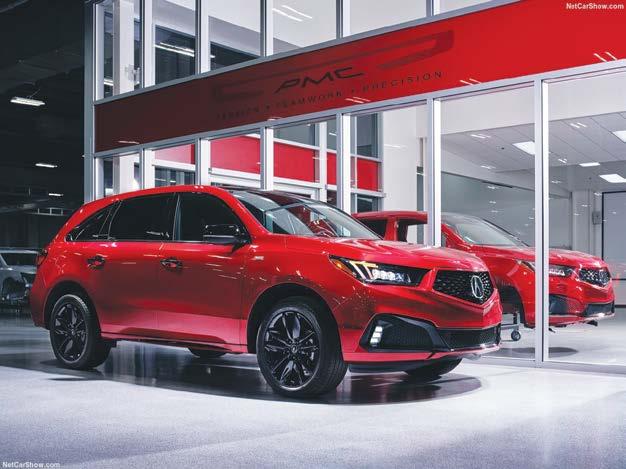


• Take photo without flash.
• Check photo to avoid blurriness.
TOAVOIDSERIOUSINJURYORDEATH: •Donotleanagainstthedoor. •Donotuseseatcoversthat Seeblocksideairbagdeployment. owner’smanualformoreinformation.






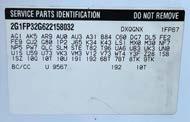
POURÉVITERDESBLESSURES GRAVESOUMORTELLES: •Nevousappuyezpascontrelaporte. •N’utilizezpasuncouvre-siège quipeutbloquerledéploiementdu Voircoussingonflablelatéral.lemanuelduconducteurpour deplusamplesrenseignements.
• Capture the label from a straight-on angle to prevent distortion.
• Maintain a consistent distance to include the entire label in the frame.

Conformstoregulations:



Thecombinedweightofoccupantsandcargoshouldneverexceed352kgor776lbs.
240kPa,35PSI
• Avoid extreme zooming or cropping to maintain accuracy.
• Submit photos in JPEG or PNG format.
240kPa,35PSI420kPa,60PSI SEEOWNER’S MANUALFOR ADDITIONAL INFORMATION
• Provide photos from different angles if the label has complex details.
• Ensure all relevant information is captured in the photo.
Conformstoregulations:
• Proof photos for clarity.
• Verify that all required details on the label are visible.


